Overview
Listed as UNESCO World Heritage site, the Valley of Flowers trek is a scenic trail located in the state of Uttarakhand, India. Its expansive flowery meadows, cascading waterfalls, views of Himalayan peaks, gushing water streams, and rich biodiversity with over 600 species of wildflowers carpeting the valley make it a major attraction for nature lovers, trekking enthusiasts, and botanists from around the world.
The trek starts from Govindghat and gradually ascends through a 9 km trail passing alpine forests and the gushing waters of the Pushpawati River toward the base camp. Ghangaria serves as the base camp for the trek, from where you can enter the Valley of Flowers National Park or hike to Hemkund Sahib.
Throughout the trek, every step leads you higher into an untouched wilderness where you breathe in the aroma of rare Himalayan flowers. Prepare to get mesmerised by the music of the dense forest that fills the environment with bird calls and gushing waterfalls. It features a vast floral meadow blooming with vibrant hues of blue, yellow, pink, and purple, surrounded by snow-capped peaks. These together create a scene that feels like a heavenly garden, making it one of the most beautiful UNESCO World Heritage Sites.
The trek to the Valley of Flowers is relatively easy, while the Hemkund Sahib route is considered a little bit challenging for beginners. Overall, the trek is moderate in difficulty and perfectly suited for beginners with decent fitness. Reaching an altitude of 3,200 m (~10,498 ft) with several gradual and steep ascents, it covers a total trekking distance of approximately 40 km, starting and ending at Govindghat via Hemkund Sahib (4,329 m/14,203 ft), which takes 6 days (including the drive from and to Rishikesh) to cover the entire trek route. If it’s about the visit to the Valley of Flowers National Park only, then it takes around 5–7 hours, covering a trekking distance of approximately 8 km for round trip, starting and ending at the Ghangaria base camp. It’s a monsoon trek, and the best time to visit the trek is in July and August, when the valley is in full bloom and you see many cascading waterfalls, making it perfect for birdwatchers and nature enthusiasts.
Facts That Make the Valley of Flowers Trek A Must-Visit Trekking Destination in Uttarakhand, India
The Valley of Flowers trek is a must-visit destination that suits seasoned trekkers and beginners alike. Wondering what makes it so special? Here are the top interesting facts that will make you pack your bags and travel to this Himalayan paradise:
UNESCO World Heritage Site Status
The valley of flowers showcases unique and rare floral and faunal varieties. It is globally recognized as a UNESCO World Heritage site (2005), giving you an opportunity to witness its unparalleled beauty. Its untouched rolling meadows, stunning waterfalls, and turbulent river streams give you a once-in-a-lifetime kind of experience of trekking in the Himalayas.
Visit the World’s Highest Gurudwara- Hemkund Sahib
Venturing beyond the Valley of Flowers to Hemkund Sahib adds a spiritually fulfilling chapter to your trek. When you visit this highest gurudwara in the world, its beautiful architecture surrounded by the glacial Hemkund Lake, fills your heart with peace. It’s the perfect place to pause, reflect, and connect with both nature and your inner self.
Rare Species of Alpine Flowers and Scenic Trails
During peak blooming season, between June and August, you will find the entire valley covered in shades of red, pink, yellow, and purple. The valley of flowers is said to be home to more than 600 species of flowers that are endemic to the region. Its scenic trails, lined with rare blooms against the backdrop of prominent peaks like Rataban and Gauri Parbat, and Pushpawati River flowing beneath, make it seem like god’s own paradise.
Note: While it is claimed that the Valley of Flowers features hundreds of rare floral species, many recent reports suggest that it has lost many of its endemic species to climate change. The increased tourist activities and overall environmental negligence have led to a decline in vegetation cover, with many plants blooming earlier than expected.
Thrill of Monsoon Trekking in Uttarakhand, India
When most of the trekking destinations in Uttarakhand shut down for the visitors, the Valley of Flowers comes to life during the monsoon season. The lush forest trails, misty landscape, bubbling streams and waterfalls, and dramatic clouds add another layer of beauty to its scenery. If you seek the thrill of trekking in the monsoon, this destination in Uttarakhand, India offers you the true beauty of the Himalayas in its raw form.
Birdwatcher’s Paradise
The Valley of Flowers is one of the core zones of the Nanda Devi Biosphere Reserve (NDBR). It is a biodiversity hotspot that supports several rare and endangered species of wildlife, reptiles, and birds. This destination features 100+ bird species like the Himalayan Snowcock, the Himalayan Monal, the Himalayan Griffon, Snow Pigeon, and more, making it truly a birdwatcher’s paradise.
Accessible Trek with Moderate Difficulty
The trails of the Valley of Flowers, Uttarakhand are well-marked. You will find several board signs and markings on the rock faces to direct you towards the designated path. Till Ghangaria, you will find several dhabas, a helipad for emergency exit, and tin shades for you to sit and relax, making it an accessible trek. Even if you are a reasonably fit beginner, you can easily attempt this moderate trek due to its gentle gradient.
Valley of Flowers Itinerary
Day 1: Drive from Rishikesh to Joshimath
Drive Distance: 246 km
Drive Time: 7-8 hrs
Altitude: 1,205 ft/367 m at Rishikesh to 6,214 ft/1,894 m at Joshimath
Highlights: Scenic drive through Devprayag, Rudraprayag, Karnaprayag, and Nandaprayag
Leave Rishikesh early in the morning; you can hire a cab or take a UTC bus to reach Joshimath directly. You will travel via National Highway 7, passing through beautiful destinations in Uttarakhand. The first stop will be Devprayag, where the Bhagirathi River meets the Alaknanda River. Next, you will arrive at Rudraprayag, the meeting point of the Mandakini River and the Alaknanda River. Further, you will drive through Karnaprayag (Alaknanda and Pindar Rivers meet) and Nanadaprayag (confluence of the Alaknanda and Nandakini Rivers).
Journeying through these sacred stops, you will pass through Hailang, finally reaching Joshimath by evening. You can explore the market here to purchase any trekking essentials and withdraw cash, as it is the last point where an ATM is available. You will be served a warm dinner at the guest house, where you will be spending the night.
Trek Distance & Time: Joshimath to Govindghat (15.2 km, 33 min); Govindghat to Poolna (5 km)
Trek Time & Time: Poolna to Ghangaria (9-10 km, 5-6 hrs)
Altitude Gain: 6,214 ft/1,894 m at Joshimath to 10,167 ft/ 3,099 m at Ghangaria
Highlight/s: Trek through the dense alpine forest with several waterfalls and river streams
We will start with an early morning drive from Joshimath to reach Govindghat via Badrinath Road on NH7. Upon reaching, visit the Gurudwara Sahib Sri Gobind Ghat, where you can relax and relish a warm meal served in langar. Here, you will also find the confluence of the Pushpawati River with the Alaknanda River. There is a car parking space from where an iron bridge takes you towards the Poolna Village.
From here, you can get a shared taxi to travel via a narrow 5 km road to reach Poolna. Upon reaching, you can find small food stalls where you can get refreshments and also an information centre where you can get your registration done.
The trail to Ghangaria, the base camp of the Valley of Flowers Trek, starts from here. The path is well marked, and you can also hire mules from Poolna to reach here. On this 5-6 hour trek, you will encounter a big waterfall and lush Deodar Forest trails. It starts with a steep ascent in the village, and further, a 2 km descent will take you to Jungle Chatti. Here, you can pause and fill your bottles at one of the food stalls.
Hiking 2-2.5 km further, you will arrive at Bhyundar Village, where you will get the stunning views of Hathi Parbat. A trail from here diverts towards the Kagbhusandi trek. Cross the stream of the Laxman Ganga River on your trail to continue your hike. A final steep climb will take you to Ghangaria Village. Here, you will find a GMVN guest house and many home stays.
End your evening with a delicious warm meal. Have a restful sleep to recharge for the next day’s exciting trek.
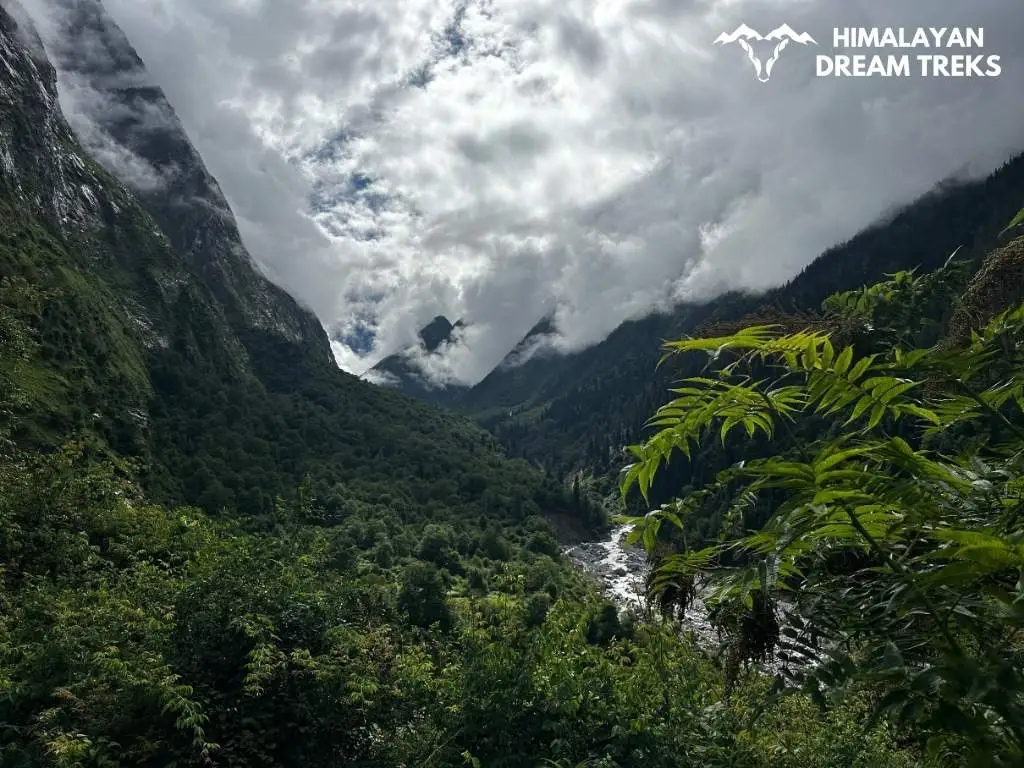

Trek Distance: 8 km, 7 hrs
Altitude Gain: 10,167 ft/ 3,099 m at Ghangaria to 10,498 ft/3,200 m at Valley of Flowers
Altitude Gain: Witness the flowering Himalayan paradise, featuring expansive alpine meadows, Pushpawati River, and big waterfalls.
Start your day early, ideally at dawn, so that you reach the Valley of Flowers by afternoon and have ample time to explore its beautiful landscape. Ghangharia has many small dhabas that offer parathas and tea for breakfast. You can also have a meal at the langar, which is served by the Gurudwara in the village. We advise you to pack a nutritious lunch for the hike today and carry at least 2L of water, as you will not find any shops inside the national park.
The slope in the beginning is almost flat, running parallel to the fast-flowing Pushpawati River. Within 1.5 km of the Ghangaria market, you will arrive at the Valley of Flowers National Park checkpost/gate. Here you will get your permit checked (entry opens from 7 am). This marks the formal entry point into the protected area of the valley.
After hiking for 200 m on a rocky trail, you will cross a bridge that stands over the stream of the Pushpawati River. Here, you will encounter the first big waterfall of your scenic trail. Keep following the designated trails that wind through the dense Deodar forest. The views keep getting better as you hike up with the valley opening further and colourful wild flowers gleaming in the sunlight.
On your way, you will find many viewpoints, giving you breathtaking views of the entire Bhyundar Valley, carpeted with flowers. The weather inside the valley remains unpredictable, no matter what season you are travelling in. To protect yourself from rainfall, you will find many caves here that will provide you with shade.
Gradually, you will arrive at the Baman Dhaud Bridge. This bridge is quite weak, and a sign here warns travellers to avoid going near the water stream. It also instructs them to cross the bridge one by one to minimise the risk of falling. The real climb starts after you cross this section, taking on the ‘Kunth Khal Marg’ (there is another trail from here that goes to Hanuman Chatti), which is steep and uneven. From here, the trail will slowly become almost flat, and you will reach the open meadow with small waterfalls and river streams.
You will have a bunch of alpine flowering plants lining both sides of your path, the colours range from red to purple, which will make you stop and stare. On your way, pay your visit to the memorial grave of Lady Joan Margaret Legge, a 19th‑century botanist who lost her life here. At last, you will arrive at the river bed of the Pushpawati River, full of moraine due to its nearby glacial origin. Relax here by dipping your tired feet in the stream and admiring nature’s marvel.
The view here is no less than a paradise with towering peaks like Gauri Parbat (6,590 m), Rataban (6,126 m) and Kunth Khal (4,430 m) covering the horizon. Unwind near the shore, have your lunch. Make sure you start your hike back to Ghangaria by 1-2 pm, as the park closes around 5 pm and camping is strictly prohibited.
Trace your steps back to your guest house, where you will be served a warm evening meal. Retire for the night.
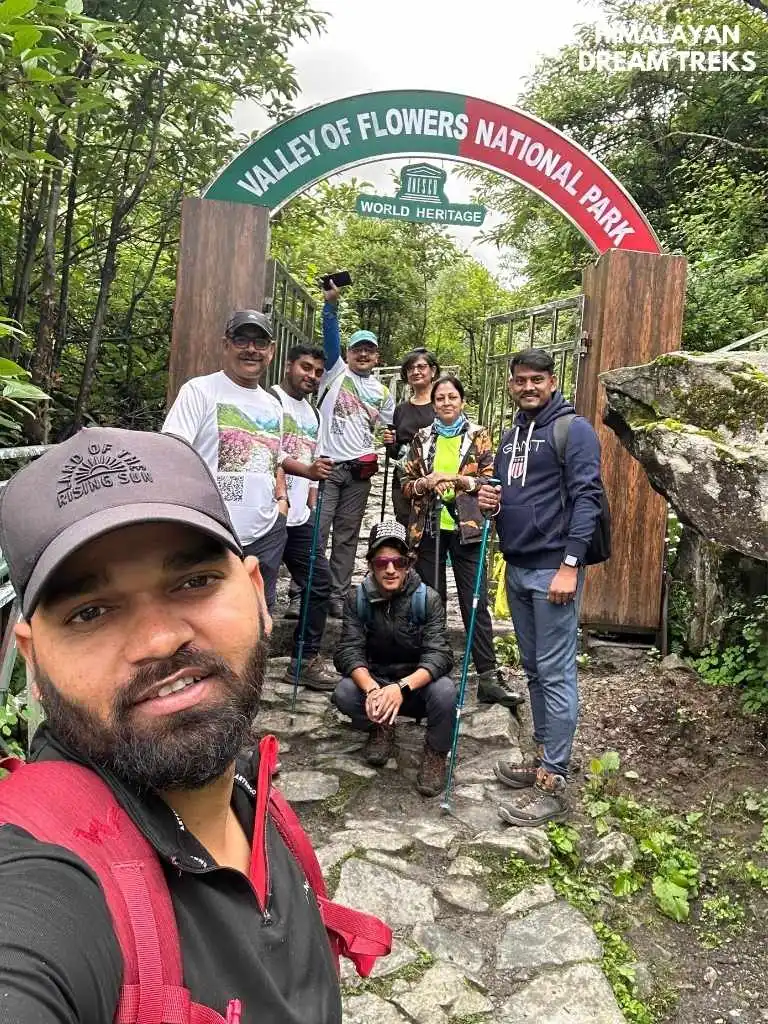
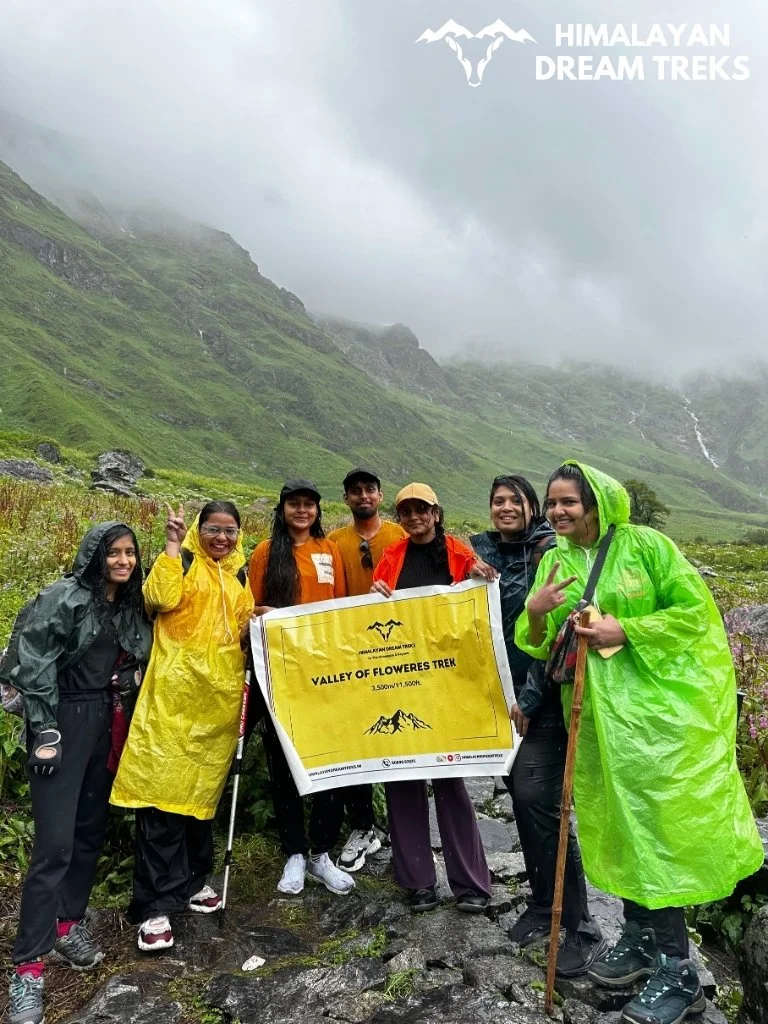
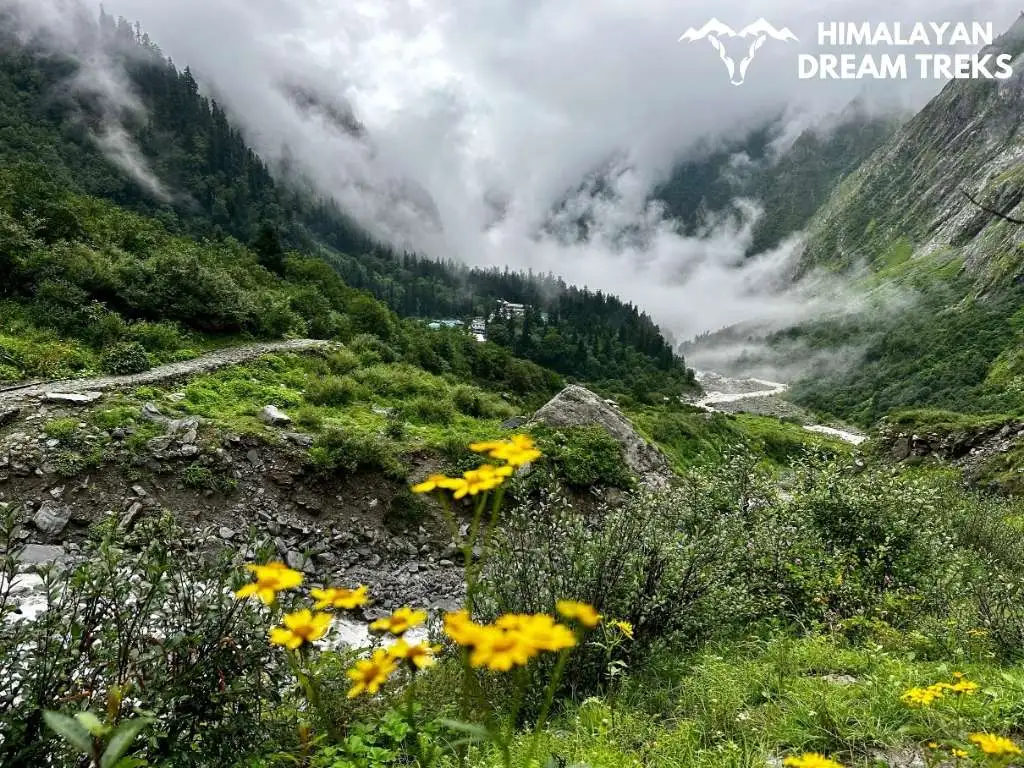
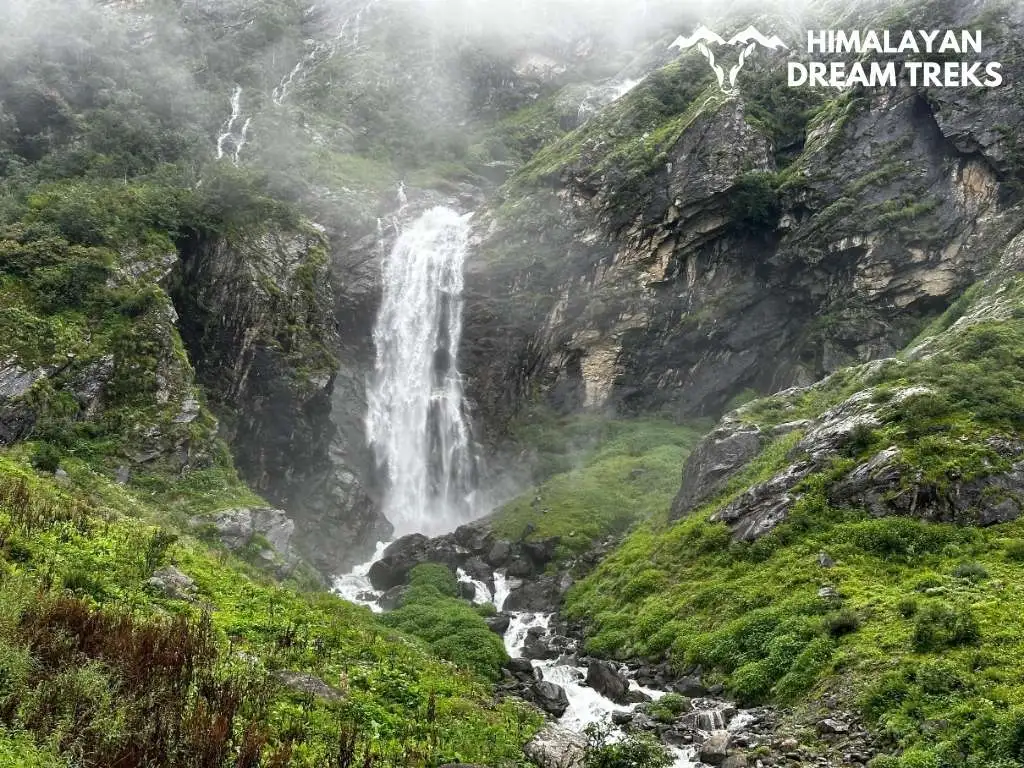
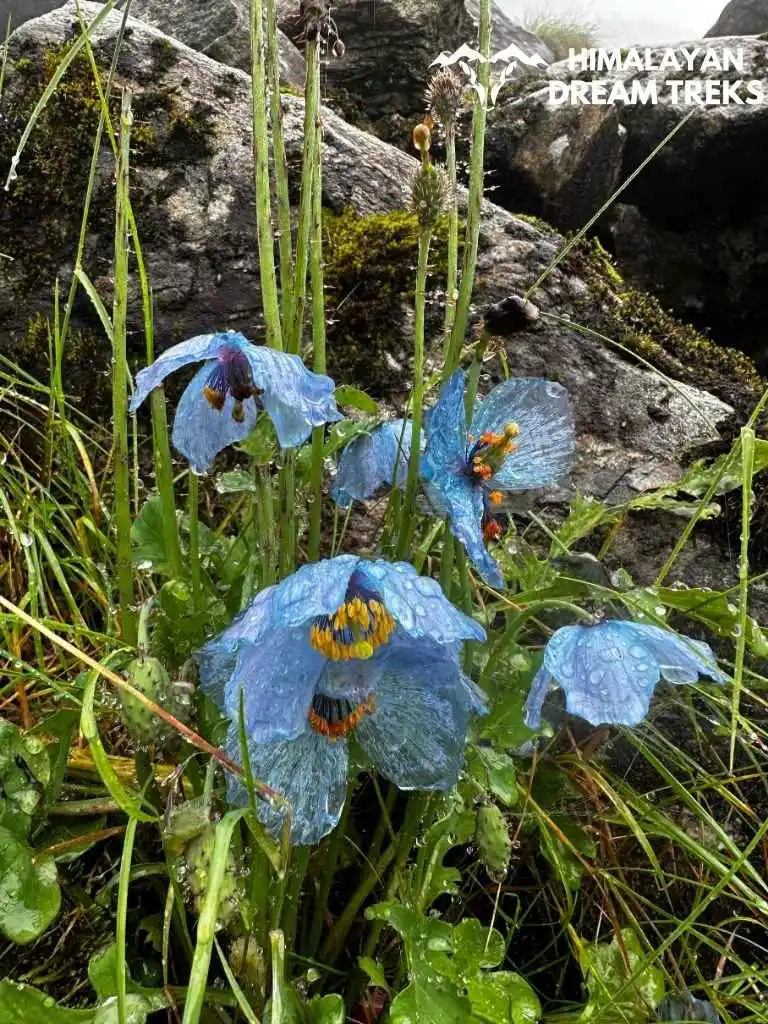
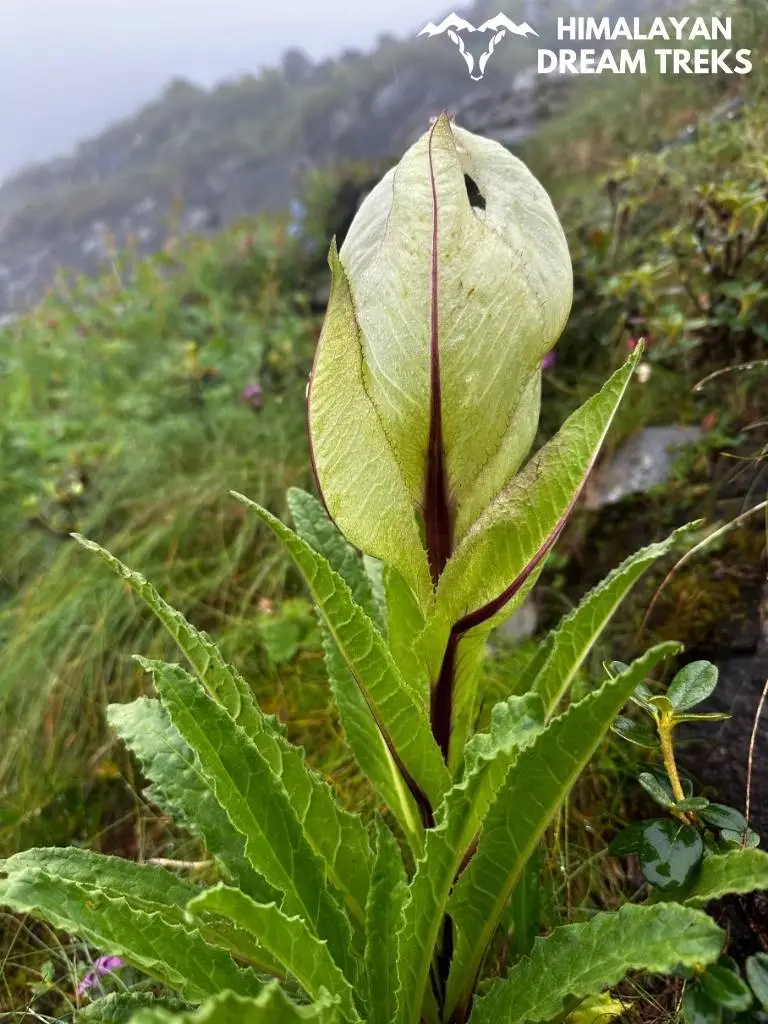
Total Trek distance & Time: 12 km; 7-8 hrs
Altitude Gain: 10,167 ft/ 3,099 m at Ghangaria to 14,203 ft/ 4,329 m at Hemkund Sahib
Altitude Gain: 1,876 ft
Highlight of the day: Immerse yourself in the serene beauty of Hemkund Sahib Gurudwara and Hemkund Lake, surrounded by the Sapt Sring mountains.
Today, we will visit the highest Gurudwara situated at a height of 4,329 m. Begin your day at dawn, and you will hear the distant Bhajans from the Gurudwara at Ghangaria filling the atmosphere. Hemkunt Sahib’s morning darshan starts from 5:00 am, and it closes briefly between 12:00 pm and 2:00 pm, before it opens again for evening darshan till 8:00 pm.
Have an early breakfast at your guest house and carry refreshments for your hike today. The trails to Hemkund Sahib are well-marked and wide, but the ascent is steeper compared to yesterday’s trek. You will cover a total distance of approximately 12-13 km out-and-back, gaining an elevation of about 1,231 m.
Take the other diversion route from the Ghangaria market, and you will see many palkis and mules getting prepared to take the devotees up. The trails wind through the mountain with zig-zag bends, and after covering a few km, you can see the tree line below you with a big waterfall. Take proper pauses in between, and admire the beautiful view of the Ghangaria Village from the top.
Throughout the trail, there are many dhabas and tea stalls available. After 3 to 4 hours of a normal-paced trek upon crossing a partially melted glacier, you will finally arrive at Hemkund Sahib Gurudwara. Soak in the sacred environment of this holy place and admire the beautiful Hemkund lake behind the Gurudwara. You may encounter the precious Brahma Kamal blooming at such a high altitude along with blue poppies. The entire scenery reflected in the crystal clear waters adds to its overall beauty.
Offer your prayers at the Gurudwara and relax inside its premises. Partake in the langar activities and enjoy the warm tea and kada prasad here. If the sky is clear, you may see some of the seven notable peaks (Saptha Shringi mountains) and others like Hathi Parbat, Saptarishi, and Neelkanth. You can also visit the Laxman Temple or the Lokpal Temple near the lake.
Try to descend back to Ghangaria by evening due to unpredictable afternoon rainfall. Leave Hemkund Sahib by afternoon to conclude today’s strenuous trek with a hearty evening meal at the guest house. Spend your night here to relax your tired feet.
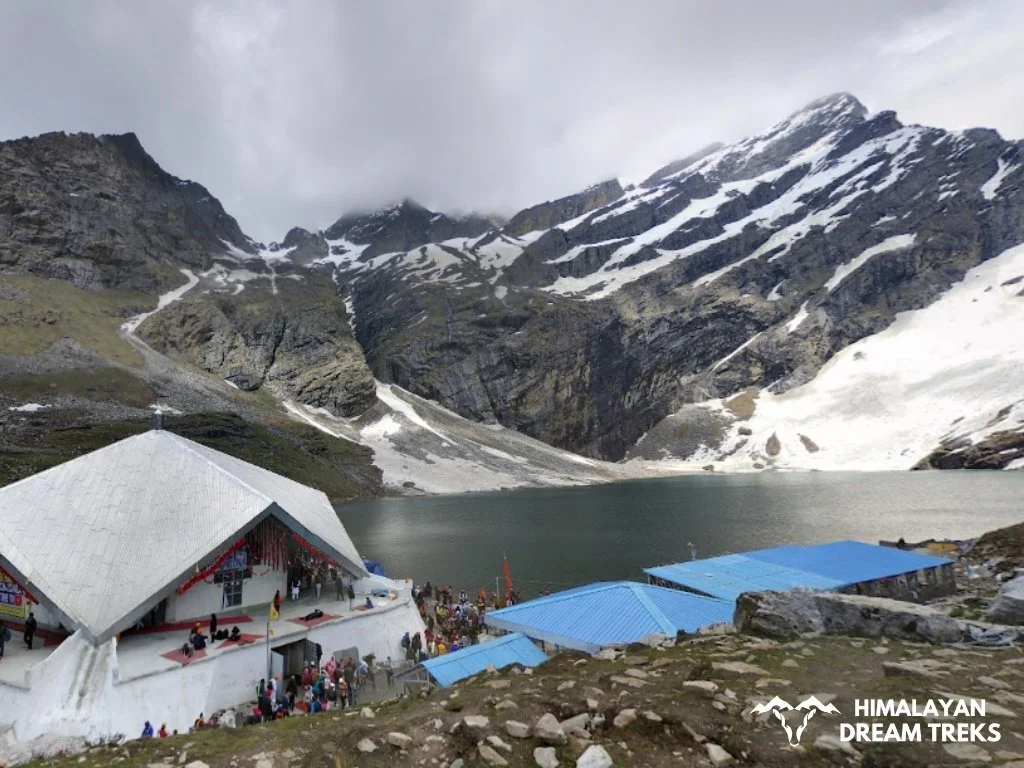

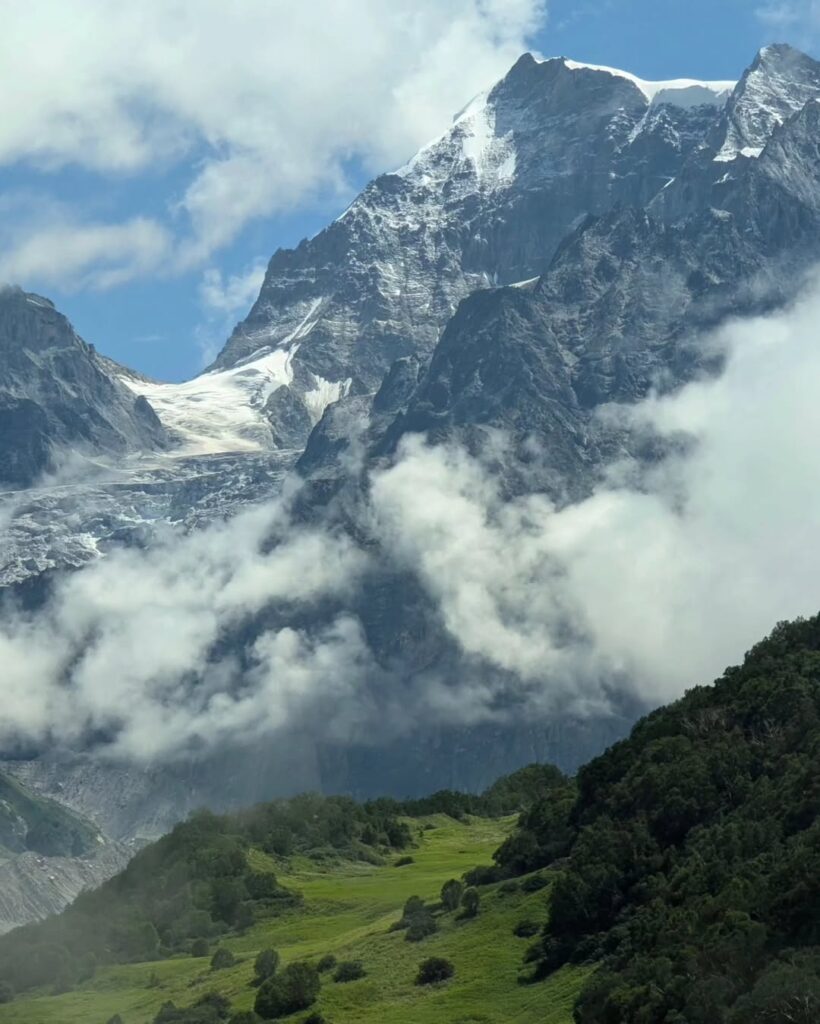
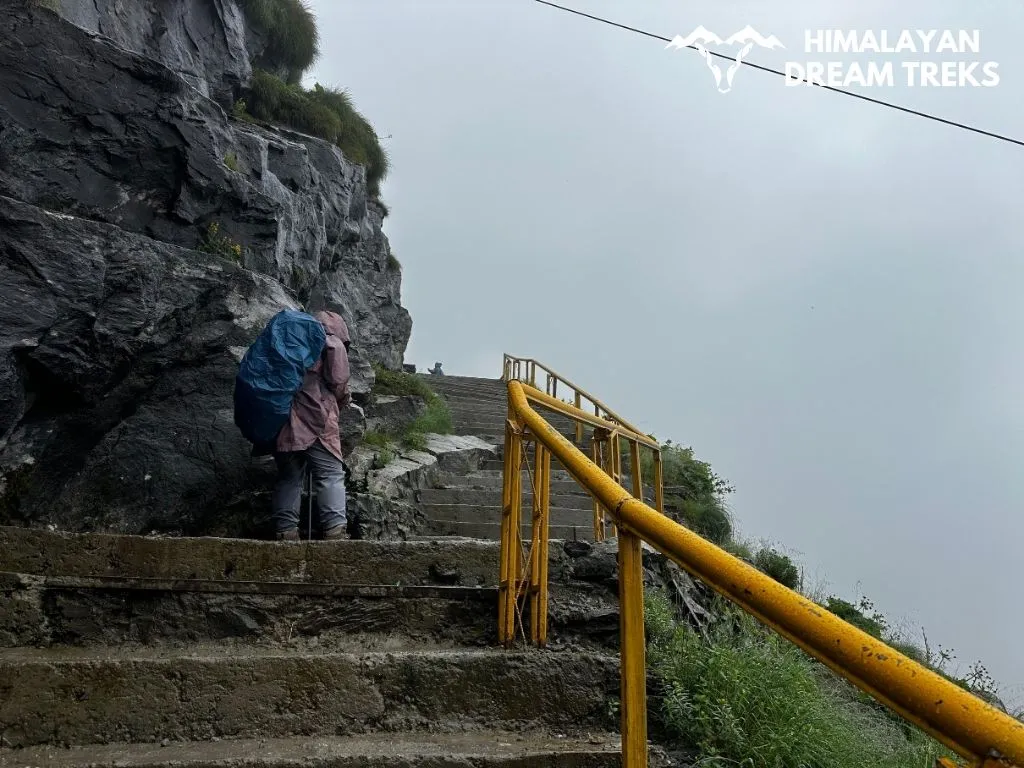
Wake up early to enjoy the beauty of this rustic village. Today, we will be heading back to Joshimath via the same trail we followed on Day 2. After your breakfast, retrace your steps back to Poolna Village.
From Poolna, hire a taxi to reach Govindghat. Enjoy the beautiful views on the way and keep your cameras ready to capture the last glimpses of this Himalayan beauty. Upon reaching Govindghat, you can either take a bus or hire a cab to drive back to Joshimath.
If time permits, you can explore Joshimath and visit religious sites like Narsingh Temple and Shri Shankaracharya Math. If you have an extra day in your itinerary, you can also visit Auli, a famous hill station in Uttarakhand. Alternatively, you can also visit Badrinath as part of your Valley of Flowers trek package.
You will have an overnight stay at Joshimath, where you will be served a warm dinner.
Day 6 marks the concluding day of your Valley of Flowers Journey. Check out of your accommodation after a hearty breakfast. Drive back to Rishikesh via NH7. Enjoy the beautiful views of the Himalayas on your way back and cherish the memories of the Valley of Flowers Trek.
Note: If you are visiting the Valley of Flowers during monsoons, we recommend you to add an extra buffer day to your itinerary. Due to heavy rainfall during this time, the landslides may block the roads and clearing the traffic may take hours. To avoid any inconvenience, consider this factor while planning your trip.
Valley of Flowers Trek Package
Price Inclusion
Accommodation for a total of 5 nights includes 2 nights in Joshimath and 3 nights in Ghangaria. Comfortable hotel stays are provided at both locations, ensuring a clean and restful experience throughout your journey. Check out for room photos here.
Transport to the trek starting point is arranged in comfortable vehicles such as Tempo Travellers or similar. The package includes round-trip travel from Rishikesh to Govind Ghat, with an optional visit to Badrinath Temple.
All meals are included from Day 1 dinner to the last day breakfast, covering a total of 5 breakfasts, 4 lunches, 4 tea-time snacks, and 5 dinners. Only pure vegetarian meals will be served throughout the trip.
Entry permit to Valley of Flowers National Park is included in the package.
Certified trek leader will accompany the group throughout the journey, ensuring safety and proper guidance.
A basic medical first aid kit will be available during the trek for emergency support.
Trek completion certificate will be provided to all participants at the end of the journey.
Price Exclusion
Travel Insurance (not mandatory but highly recommended)
Meals during the transfer
Registration for Badrinath Temple
Offloading charges for backpack or personal luggage
Any expenses arising due to emergencies, delays, or unforeseen situations
Items or services not mentioned in the Price Inclusions section
Check the booking procedure here, including details on booking deposits, payment terms, refund and the cancellation policy.
Best Time to Visit Valley of Flowers
The valley opens on June 1st onwards and remains open till the end of October for visitors. The best time to visit the Valley of Flowers is from mid-July to mid-August because this is the time when meadows and flowers are in full bloom, and the landscape seems heavenly with vibrant hues of yellow, pink, red, and many other colors. It is one of the most popular monsoon trek destinations in India, as its scenery comes alive during this season. It is the ideal time for nature lovers, photographers, and pleasant hiking enthusiasts. This season offers you spectacular views adorned with 600+ flowering species, clear streams, several waterfalls and foggy mountain peaks. Notable blooming flowers include the rare Himalayan Blue Poppy, Brahma Kamal, Cobra Lily, and numerous varieties of orchids, marigolds, balsam, and primulas.
The weather at this time is most favourable, providing moderate difficulty to the trekkers. However, due to unexpected rainfall, the slippery trails, overflowing streams, and a few landslide zones may make it challenging. These challenges are manageable and enhance the overall adventurous experience of trekking in this UNESCO World Heritage site.
To give you a full picture of what each month brings to the Valley of Flowers, let us discuss it in detail:
June is the transition period when the snow at the higher altitudes starts melting and days start to become warmer. This month is ideal for visitors who want to plan summer vacations with kids due to the favourable trekking conditions. Most of the early-flowering species like anemones, potentillas, wild roses, and primulas start blooming during this time. You will find the Hemkund Lake half frozen during this time. The trails may have a few patches of snow at higher altitudes, making the overall experience exciting. You will find minimal rainfall during this time; however, after the second week of June, light pre-monsoon rainfall becomes prominent.
| Attribute | Details |
| Min/Max Temperature | 6°C / 16°C |
| Weather Overview | Pleasant daytime weather with cool eveningsPre-monsoon showers in late June |
| Trekking Difficulty | Easy To Moderate |
| Scenery and Landscape | Green landscape with melting glacial streams and clear sky |
July marks the onset of monsoon season in the Valley of Flowers. The rain becomes more frequent during the afternoon. However, the trekking conditions remain favourable due to accessible and well-marked trails. The drizzle triggers many flowering plants to bloom during this month, covering the valley in shades of red, yellow, purple, and pink. July is the best time for experienced trekkers who want a moderately challenging and relatively less crowded trail. We advise you to carry appropriate gear like water-resistant shoes, a poncho, trekking poles, etc., to ensure your safety on the slippery trails.
| Attribute | Details |
| Min/Max Temperature | 8°C / 20°C |
| Weather Overview | Light rainfall during early JulyHeavy rainfall in late July |
| Trekking Difficulty | Moderate |
| Scenery and Landscape | Misty landscape with blooming scenery and cloudy sky |
Monsoon arrives in full swing in August, bringing heavy rainfall and unexpected showers. The weather remains cool during the day, and mist engulfs the entire valley, colouring it in lush, vibrant greenery. This month reveals the ultimate beauty of the Valley of Flowers, with hundreds of flower species blooming during this time. August features breathtaking landscapes, perfect for nature photography lovers, as heavy clouds and towering peaks create a dramatic scene. Due to the unpredictable heavy rainfall and muddy trails, the trek becomes moderately challenging. Therefore, you must take extra caution while crossing landslide zones, water streams, and wooden bridges during this time.
| Attribute | Details |
| Min/Max Temperature | 7°C / 24°C |
| Weather Overview | Cool weather with heavy and unexpected rainfall |
| Trekking Difficulty | Moderate |
| Scenery and Landscape | Misty landscape with lush greenery and foggy mountain peaks |
September marks the post-monsoon season in the Valley of Flowers. You will find favourable weather conditions with predictable showers, which make trekking easy in the valley. The rainfall becomes less frequent, and by this time, most of the flowering plants lose their blooms. However, you will still find a few wildflowers and dry grass colouring the landscape in the shades of yellow. September is an ideal month to visit the Valley of Flowers, if you want to experience its crisp environment and visible peaks under clear skies. Please note, this is a peak tourist season for Hemkund Sahib Yatra, so plan your trip ahead accordingly.
| Attribute | Details |
| Min/Max Temperature | 3°C / 23°C |
| Weather Overview | Cloudy weather with occasional rainfall |
| Trekking Difficulty | Easy to moderate |
| Scenery and Landscape | Beautiful scenery with fewer blooms and green meadows |
Autumn arrives in the Valley of Flowers in October, transforming the landscape into yellow and brown shades. The month witnesses scarce rainfall and dry weather conditions, perfect for trekking and exploring the national park. The days become colder compared to the previous months, and nights become chilly, so you must carry appropriate warm clothing. October is ideal for trekkers who prefer colder weather and fewer crowds on the trails. This month is perfect for photography lovers as the clear skies give stunning views of the prominent peaks in the valley.
| Attribute | Details |
| Min/Max Temperature | 1°C / 20°C |
| Weather Overview | Pleasant and cold weather conditions, ideal for trekking |
| Trekking Difficulty | Easy to moderate |
| Scenery and Landscape | Picture-perfect autumn landscape in the Valley with fewer blooms |
Trekking Difficulty of the Route
Valley of Flowers Trek is considered a moderately challenging trek and is well within reach for anyone with a decent fitness level and even first‑time trekkers. Over the first two days, you’ll cover roughly 20 km round‑trip from Pulna to the national park’s entry gate. Your ascent begins at Govindghat (5,827 ft) and takes you up to Ghangaria (10,167 ft/3,099 m) in a single day. From there, the path climbs another 3,000 ft on the way into the heart of the Valley of Flowers.
The route from Pulna to the park entrance is laid out with a stone-paved path and has tin shades throughout for trekkers to relax and pause. Aside from a few steep stretches, the gradient remains fairly level. Once inside the park, expect to walk over uneven and jagged stones that demand careful footing. You’ll encounter several streams fed by the Pushpawati River and pass through one small landslide‑prone section. Because the trail has no technical obstacles and offers accessible exits, it suits both beginners and seasoned hikers alike.
On day 4, you will venture to the Hemkund Sahib, which involves a steeper and challenging climb than the visit to the Valley of Flowers National Park. Here, you will be gaining about 4,035 ft over just 6 km of walking distance. This trek has a moderate difficulty level, and it is best if you are experienced with high-altitude treks. Overall, the Valley of Flowers Trek, along with Hemkund Sahib, requires you to be reasonably fit. Acclimatization is necessary to avoid altitude sickness, as both treks are located above 10,000 ft.
Preparation for the Trek [Physical Fitness, AMS]
Treks are all about fun, adventure, finding yourself, etc, but only for those who are mentally and physically fit. Because activities like treks, especially a Himalayan trek, challenge you on different levels in unimaginable ways and situations.
The Valley of Flowers Trek with Hemkund Sahib falls under a moderate-level category. However, the route to Valley of Flowers alone is considered easy to moderate. For a complete understanding of the difficulty read the detailed itinerary of each day.
Here’s a quick guide to help you stay physically fit and aware of altitude-related challenges:
The trek difficulty dictates your level of fitness and preparations for it. As mentioned above, it is moderate level trek and proper preparation is needed as it’s mountainous terrain.
In the beginning, the ascent from Poolna to Ghangaria can feel challenging as it is going to be your first day and involves an uphill walk of about 9 km. The good part is the trail is gradual, easy to follow, and the terrain is completely manageable. On Day 2 their is a little bit steep ascent after crossing the Pushpavati river and start moving upward. That section is also completly manageable.
The real challenging part is the ascent to Hemkund Sahib Gurudwara, which demands stamina, muscle strength, and body balance. This trail begins from Ghangaria and remains steep all the way until you reach Hemkund. One of the main challenges is the significant altitude gain, which increases fatigue on this steep ascent and can also affect you mentally, as your heartbeat rises faster than on normal days.
This section does require good physical fitness. However, by taking your time, resting when needed, and walking with confidence, the climb becomes more manageable and less overwhelming.
Mental preparation includes thorough research of the trek you want to do or decide to do. Understand the terrain, difficulty level, and the ways to get fit for it, look up for sudden situations that may happen, and how to tackle them. Being prepared gives you an edge to keep calm & handle a difficult situation.
1. Exercises to achieve the goal
- Cardiovascular Training: Running, cycling, and swimming to boost stamina.
- Strength Training: Focus on leg exercises like squats, lunges, and step-ups for endurance.
- Core Strength: Planks, mountain climbers, and Russian twists to maintain balance on uneven trails.
- Flexibility Exercises: Stretching, yoga, and dynamic warm-ups to prevent injuries.
- Mental Conditioning: Visualisation techniques, breathing exercises, and meditation to strengthen focus and manage stress on difficult days.
Tip: Practice exercises with weights. Seek professional advice accordingly.
2. Extra Tips related to the diet, muscle recovery, and healthy lifestyle routine
Diet: Incorporate proteins like lentils, eggs, paneer, whey protein, etc for fast recovery after a strenuous trek. Whole grains like wheat, barley, etc for sustained energy, and leafy greens like spinach, bitter guard, and any seasonal veggie for those extra nutrients and building the immunity system.
Muscle Recovery: Plan rest days and add stretching, relaxing yoga poses or foam rolling after every workout.
3. Lifestyle Routine:
Stay hydrated – drink 2 to 3 liters of water. To incorporate more nutrients, including coconut water, fruit, and vegetable juices.
Limit alcohol and caffeine consumption.
Start sleeping upto 8 hours.
Altitude Sickness happens when your body cannot adjust to lower oxygen levels at higher altitudes. This happens mainly because your body doesn’t have enough time to acclimatize to a higher altitude or not enough time to get used to lower oxygen levels.
How to Prevent AMS –
- Gradual Ascent: Climb slowly to give your body time to adjust.
- Hydration: Drink plenty of water to prevent dehydration.
- Rest and Sleep: Ensure ample rest, especially as you reach higher camps.
- Avoid Alcohol: Limit alcohol and caffeine, which can lead to dehydration.
What to do –
- Most Important – Inform your trek leader as well-trained leaders and experience they can assess the situation better and find solutions faster.
What trek leader may suggest? Trekkers without agency should also know these instructions –
- Stop and Rest: Pause your trek to recover.
- Descend if Necessary: Descend immediately to Sankri Basecamp. Our team with the vehicle and necessary help will be there for further action.
- Stay Hydrated: Drink water and avoid strenuous activity.
- Seek Medical Help: After descending, our team will take you to the nearest hospital if needed. If solo, then descend and seek the closest medical help.
Trek Essentials [What to Pack]
- 45-60 Ltr Bag Pack With Rain Cover & Comfortable Straps
- Hot and Cold Water Bottle Like Borosil and Milton
- Energy Bar, Dry Fruits, and ORS
- Personal Medical Kit
- 1 Pair of Sunglasses (UV Protected)
- 1 Neck Gaiters (Buff)
- Tiffin Box
- 2/3 Full Sleeves (Non-Cotton)
- 1 Full Fleece T-Shirt
- 1 Fleece Jacket (Woolen or Sweater)
- 1 Down Feather/ Hollofil Jacket
- 1 Waterproof Jacket/ Poncho
- 1 Pair of Thermal Inners (Upper and Lower)
- 2 Trek Pants (Avoid Shorts and Denim Pants)
- 1 Pair of Waterproof Gloves
- 1 Pair of Woolen Gloves
- Sun Cap
- Woolen Cap
- 4 Pairs of Cotton Socks
- 1 Pair of Woollen Socks
- 1 Waterproof and High Ankle Trekking Shoes
- 1 Pair of Floaters
- Hand Sanitizer and Sunscreen Lotion
- Toothbrush and Toothpaste
- Toilet Paper
- Quick Dry Towel
- Lip Balm and Antibacterial Powder
- Moisturizer
- Aadhaar Card, Pan, or Passport for Applying Permit
- Trek Insurance
- Medical Certificate
- Self-Declaration Form
- Sleeping Bag
- Common Tent
- Mattress
- Dining Tent
- Camping Stool
- Walkie Talkie (For Team)
- Utensils
How To Reach Govindghat For the Valley of Flowers Trek
The nearest airport to Govindghat is Jolly Grant International Airport in Dehradun, which is approximately 257.7 km away. This airport receives numerous direct and connecting flights from major cities, including Delhi, Mumbai, Chennai, Kolkata, and Bangalore, among others. Upon arrival in Dehradun, you will find many options, like taxis and buses, that will take you to Govindghat.
Additionally, the helipad at Govindghat enables further travel to Ghangaria, which you can book in advance from Dehradun.
Rishikesh railway station is the nearest railway station to Govindghat, located about 260 km away. This railway station is connected to most major cities in India. Other nearest railway stations are Haridwar Railway Station (284 km) and Dehradun Railway Station (306 km).
However, for your convenience, you can take a direct train to Delhi from your city. From Delhi, you can switch to another train to reach Rishikesh/Haridwar/Dehradun, or you can take an overnight bus to reach the city.
Try to arrive in Rishikesh on day 0 of your itinerary, so that you can explore this tourist destination and acclimatise before the trek. From Rishikesh, you can get various road options to reach Govindghat directly.
Driving Route via NH7:
Rishikesh – Devprayag – Srinagar – Rudraprayag – Karnaprayag – Gopeshwar – Pipalkoti- Joshimath – Govindghat
Govindghat is located on National Highway 7, which ensures it is accessible and well-connected to major cities in Uttarakhand via a motorable road. These cities include Rishikesh, Haridwar, Dehradun, Pauri, Shrinagar, Rudraprayag, Chamoli, Ukhimath, and Joshimath, among others.
Cities like Dehradun, Haridwar, and Rishikesh can be easily reached via road from Delhi. Delhi’s bus stations like ISBT Kashmiri Gate and Anand Vihar have daily buses leaving for these tourist destinations. From here, you will get many UTC bus options to reach Joshimath or Govindghat. Alternatively, you can hire a cab or drive your private vehicle from Delhi to reach Govindghat via these cities.
Gangotri, the starting point for Gaumukh Tapovan, is approximately 237.1 kilometers from Dehradun. To reach there, you can hire a private taxi or take a bus from Dehradun, which takes around 7 hours.
Buses to Uttarkashi leave early in the morning from Dehradun Hill Station and Prade Ground. The bus ticket usually costs 350 – 400 Rs. And shared taxi charges from 400-500 which can be booked in Rispana Pul and Prade Ground. To reach Uttarkashi by 12 PM, you must board the bus early in the morning, around 5 am. Taxis from Uttarkashi bus stand to Gangotri leave till 2 Pm during the summer season and 12 pm in the autumn season.
Once you reach Uttarkashi, you can get a shared taxi to Gangotri, which charges 300- 400 RS and can be found at the Uttarkashi taxi stand.
We also arrange transportation services for our trekkers, with the pickup point being Prince Chowk, Dehradun and pick-up time between 6 am and 7 am. An add-on of INR 2500 will be charged from trekkers.
Valley of Flowers Trek Route Map
The route map of Valley of Flowers Trek usually follows these steps: Rishikesh → Joshimath via Devprayag → Govind Ghat → Poolna → Ghangaria → Valley of Flowers and back to Ghangaria → Hemkund Sahib and back to Ghangaria → Joshimath via Poolna and Govind Ghat → Rishikesh.
If you are traveling from cities like Delhi, Mumbai, Ahmedabad, etc., Yog Nagari Railway Station, Rishikesh, and Jolly Grant Airport, Dehradun, are the best options for fast travel to reach the destination. Further ahead, it’s a road trip to reach Govind Ghat, from where the walking starts. The complete route of the Valley of Flowers trek is approximately 40 km from Govind Ghat to Govind Ghat for a round trip, excluding any driving distance from Poolna. Below is the route map plotted with clear trekking trails, walking distances, elevation changes, and major landmarks. Let’s find out useful insights outlined in the map and make your journey to the Valley of Flowers more transformative with this map guide.
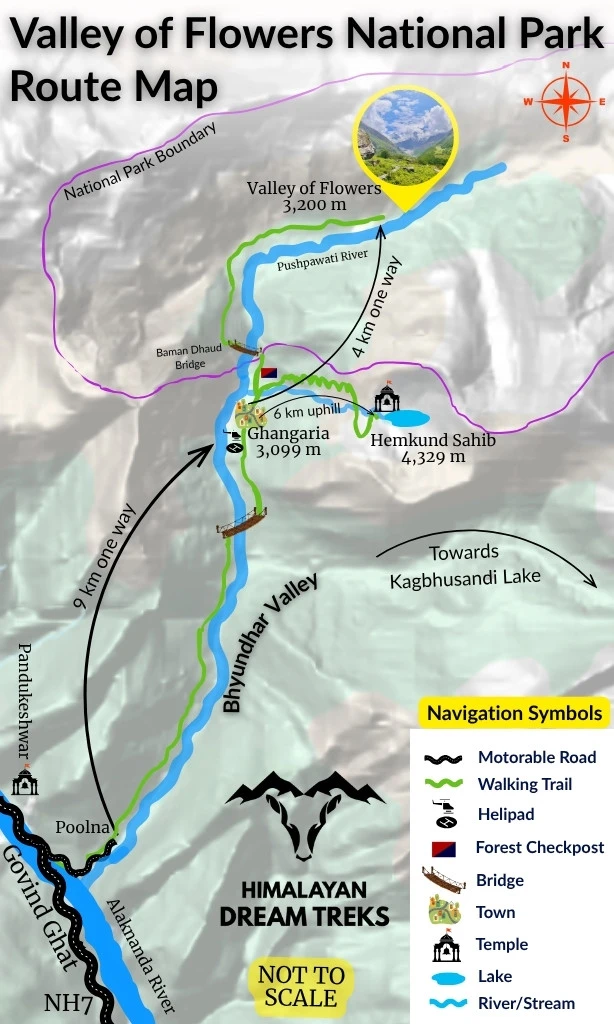
Current Weather & Temperature [Live Report from Ghangaria]
Other Facts to Know about the Valley of Flowers
Read more info regarding Valley of Flowers below
- Early History: For a long time, the Valley of Flowers was unknown because it’s so remote. Only local shepherds visited. In 1862, Colonel Edmund Smyth of the Indian Army found it by following the Pushpawati River, but didn’t have enough supplies to explore it fully.
- First Discovery: In 1931, six English climbers, including Frank Smythe and P.L. Holdsworth, climbed Mount Kamet. On their way down, they wandered into a lush meadow full of Primulas. Holdsworth, a botanist, and Smythe camped there and took notes on all the colorful flowers.
- Rise to Fame: Smythe was so enchanted that he returned in 1939 to collect seeds and bulbs. He named it the “Valley of Flowers” and wrote a book by the same name, which made the meadow famous. That year, Lady Joan Margaret Legge from Kew Gardens visited to study the flowers, but sadly had an accident and died. A small memorial marks the spot where she fell.
- Recognition as a National Park: As more people came to visit and study, the Indian government stepped in to protect the area. In 1980, it was declared a protected zone under the Wildlife Protection Act. Further, in 1982, it officially became the Valley of Flowers National Park.
- UNESCO World Heritage Site: Botanist Professor Chandra Prakash Kala spent ten years (1993-2003) studying the park and documented over 520 plant species. His work helped the valley earn UNESCO World Heritage status on July 14, 2005, in recognition of its unique plants and stunning scenery.
- Local Legends: Even though Europeans “discovered” the Valley of Flowers in 1931, ancient Indian scriptures mention the valley. The Skanda Purana calls it Nandana Kanan, “Garden of the Gods.” Kalidasa’s Meghadūta names it Alkapuri. Local legends say Hanuman brought the life‑saving herb Sanjeevani here, and the Pandavas named the river Pushpawati, meaning “flower‑filled stream.”
- Significance of Hemkund Sahib: High above the valley is Hemkund Sahib, a holy lake and Sikh temple dedicated to Guru Gobind Singh. Sikh tradition holds that the Guru meditated here in a past life, adding a spiritual layer to the valley’s natural beauty.
The Valley of Flowers is a protected area and one of the recognized national parks in Uttarakhand. It is a biodiversity hotspot that supports several fauna and flora species endemic to the region. It lies in the eco-sensitive zone as it includes many critically endangered species. Let us discuss them in detail:
Flora at the Valley of Flowers
The Valley of Flowers was designated as a UNESCO World Heritage site due to its wide variety of floral species. It showcases more than 600 varieties of flowers, and its vegetation features western Himalayan alpine shrubs and meadows. Some of the popular flora species in the valley are listed below:
- Himalayan Blue Poppy
- Brahma Kamal
- Himalayan maple
- Himalayan Cobra Lily
- Himalayan Broomrape
- Himalayan Knotweed
- Himalayan Yew
- Geraniums
- Himalayan Slipper Orchid
- Primula
- Campanulas
- Heracleum
- Shamrock pea
- Atrilal
- Polygonum
- Peruvian daisy
- Mary Legge’s Balsam
- Falconer’s Monkshood
- Balfour’s Monkshood and more
Fauna at the Valley of Flowers
Beyond its vibrant plant life, the Valley of Flowers is also a sanctuary for a variety of Himalayan wildlife. It is located within the Western Himalayas Endemic Bird Area (EBA). Roughly 13 different wild mammal species roam the park and its fringes, while numerous protected birds and reptiles find safe haven within its boundaries. Below is a selection of the most notable animal species you might encounter in the Valley:
- Himalayan tahr
- Himalayan musk deer
- Mouse hare
- Himalayan black bear
- Red fox
- Himalayan weasel
- common langur
- Flying squirrel
- Himalayan yellow-throated marten
- Himalayan brown bear
- Blue Sheep or Bharal
- Serow
- Snow leopard
- Common leopard
- Badrinath Temple: You can easily reach Badrinath, about 23.9 km from the Valley of Flowers, by hiring a taxi from Govindghat. Located along the banks of the Alaknanda River in Chamoli district, the sacred Badrinath Temple is dedicated to Lord Vishnu.
- Narsingh Temple: Just 15.4 km from Govindghat, this revered shrine, also called Sapt Badri, is a must-visit for Hindu devotees. In winter, the idol of Lord Badri is brought here from Badrinath Temple. Inside, you’ll find the image of Lord Narsimha, Vishnu’s fourth incarnation, portrayed in his half‑human, half‑lion form.
- Shankaracharya Math: Also known as Jyotirmath or Jyotir Peetham, it is one of the establishments facilitated by the Indian philosopher Adi Shankaracharya in the 8th century. Located in Joshimath, this Math houses Laxmi Narayan Temple. It is a must-visit for spirituality seekers who want to learn more about Advaita Vedanta philosophy.
- Kalpavriksha Joshimath: This mystical mulberry tree is situated in Jyoteshwar Mahadev Temple in Joshimath. Local legends say that Kalpavriksha is about 1,500-2,500 years old and marks the meditation place of Adi Shankaracharya.
- Auli: Situated at 2,800 m near Joshimath, Auli is a scenic mountain retreat blanketed in snow for much of the year. Its wide slopes are ideal for skiing and ice‑skating, while clear days reward you with panoramic views of the Nanda Devi peaks. It is famous for its ropeway ride that features a birds‑eye view of Auli.
- Gorson Bugyal: Located just 3 km from Auli, Gorson or Gurson Bugyal is an alpine meadow, perched at about 3,056 m. It is one of the easiest hiking destinations. This expansive bugyal features breathtaking views of prominent peaks like Nanda Devi, Kamet, Dunagiri, Hathi Ghoda Parvat, Mana Parvat, and Nar Parvat.
- Pandukeshwar (Yog-Dhayan Badari): Just 18 km from Joshimath on the road to Badrinath, Pandukeshwar (one of the Sapt Badri shrines) is a hidden treasure of the Mahabharata legend. Named after King Pandu (father of the Pandavas), it’s said he installed a bronze Shiva idol at the Yogadhyan Badri temple. Nearby stands the Vasudeva Temple, said to be built by the Pandavas themselves
SCI, Foreign Permit & Vehicle
HDT is registered with the IMF, and we can cater to the needs of SCL for Government Employees. According to the rule, the government of India provides its employees with a prospect where they’re allowed to apply for a 30-day special casual leave in a calendar year to do trekking, hiking, or whatever adventure pleases them.
Mail us at info@himalayandreamtreks.in or call us at +91 80896 93825, if you want to avail SCL.
For foreign nationals, permit charges are different, and hence the overall package price is different for foreign trekkers. Connect with us before booking your trek.
- For 4-6 people Ertiga/Bolero or equivalent vehicle.
- For 7 or more people, Force Traveller.
FAQs
In 2025, the Valley of Flowers National Park opens up around June 1st and will close around October 31st. Its closing date is decided by the forest authorities, depending on the weather and trail conditions.
The Valley of Flowers opens to visitors daily at around 7:00 am in the morning. Its entry gates close around 5:00 pm. You must start your hike early, at around 6:45 am, to have ample time for exploring the valley. Return to Ghangharia early before sunset to avoid the dangers of wild animals in the dark.
Guided tours offer convenience, local insights, and logistical support. This is an ideal choice for first-timers and especially for female solo travelers. Booking a Valley of Flowers package with a trustworthy tour operator ensures you are covered for permits and emergency travel support during unpredictable weather. Their customized itinerary helps you plan according to your trekking experience, with clean accommodations and meal facilities. The local expertise enhances your overall adventure with safe navigation techniques on difficult trails while showing you hidden viewpoints.
The package cost of the Valley of Flowers trek varies from INR 10,000 to INR 15,000, depending on the itinerary, group size, service inclusions (accommodation, transportation, meals, trek essentials, etc.), and the time of the year (off-season or on-season) you are planning for trekking. A local tour operator and listed as a certified service provider by Uttarakhand Tourism, Himalayan Dream Treks offers the Valley of Flowers trek package (6D/5N) with transportation (Rishikesh to Rishikesh) for INR 9,999 per person. With the 5 nights & 6 days itinerary, the package has essential services including transportation in a good condition temp traveler, accommodation in the best hotels, nutritious meals, a certified guide, local sightseeing options, a trail permit, and activities.
As an on-ground tour operator, Himalayan Dream Treks has expertise in making arrangements and handling logistics to provide an unparalleled experience for guests. To make your trekking experience as convenient and enjoyable as possible, our travel experts and dedicated support staff are available anytime to help you with any queries or issues related to the trek.
The best time to visit the valley is between mid-July to mid-August. It is a monsoon trek, as this season offers the best views inside the valley.
Not necessarily, monsoon is the peak visiting season because the valley comes alive with most of its flowers in full bloom. The valley remains open from June through October, and each month brings unique scenic features to the park.
No, the Valley of Flowers National Park remains closed during February due to extreme winters and heavy snowfall.
In June, you’ll see early blossoms and fresh greenery under unpredictable skies. You can expect occasional rain and mist, rocky paths, and fewer crowds before the full bloom.
The trek inside the Valley of Flowers is not possible as the national park remains closed throughout this season. It receives heavy snowfall, leaving the trails blocked and inaccessible till May.
The Valley of Flowers Trek features a moderate level of difficulty due to a few steep sections, well-marked but rugged trails, and accessible exits.
From its base camp, Ghangaria, the Valley of Flowers Trek takes about 5-7 hours round trip, depending on your pace and the pauses you take.
The trek starts from the village of Ghangaria, which is accessible from Poolna Village and further from Govindghat.
The popular trekking route follows the path from Govindghat to Poolna and then to the base camp, Ghangaria. Alternatively, a new route, ‘Kunthkhal-Hanuman Chatti trek route’ has been opened recently, where trekkers can visit the valley of flowers from Hanuman Chatti (10 km from Badrinath).
Inside the Valley of Flowers, you can go up to the Pushpawati Riverbed, at about 10,498 ft/3,200 m. If you also go to the Hemkund Sahib, the maximum altitude you will reach can be around 14,203 ft/ 4,329 m.
Yes, if you’re reasonably fit, you can tackle this trek without prior experience as a beginner.
No formal trekking background is required for the Valley of Flowers trek. However, prior hiking experience can make the ascent easier.
Children and seniors can enjoy the trek if they’re fit and prepared for altitude. There’s no strict age limit, but it’s wise to take it slow, stay hydrated, and acclimatize properly for the Valley of Flowers trek.
Yes, the Valley of Flowers is safe for female solo travellers, as it is a popular destination and is frequented by many during peak season. However, we recommend that you book with a reliable tour operator who can provide you with clean accommodation, transportation, and safety on the trails through their local insight.
It is possible to attempt the Valley of Flowers trek solo for beginners. However, to ensure your safety on this monsoon trek, booking with a reliable tour operator is very important. Given the moderate-level difficulty of the trek with slippery trails and unpredictable weather, traveling solo poses a serious threat to first-time travelers. With tour operators, you can trek with a group of other travelers and share your rooms or tents with them, helping you complete this trek within your budget. Their familiarity with trails and emergency exits removes extra hassles for new travelers. Further, they handle uncertain travel departures, as traveling from Rishikesh to Joshimath may require you to change multiple buses, and missing even a single bus can leave you stranded for hours.
You can reach Delhi first from your city, either by train/flight/bus or private vehicle. From Delhi, catch a train or bus to Haridwar/Rishikesh, then transfer by bus or taxi via Joshimath to Govindghat. From Dehradun or Haridwar directly, take a bus or drive to Joshimath (≈9 hrs), then onward to Govindghat. Rishikesh also offers direct buses/taxis to Joshimath.
Haridwar and Rishikesh railway stations are the closest railheads to the Valley of Flowers. Dehradun’s Jolly Grant Airport is the nearest airport.
Yes, helicopter services are available between Govindghat to Ghangaria. However, from Ghangaria, you will have to explore the Valley of Flowers on foot.
Rishikesh and Joshimath are connected through a motorable road via Badrinath Highway, which is in good condition. However, it narrows and winds through the mountains, and landslides may block it during the monsoon.
The total distance from Badrinath to the is approximately 25.7 km, with a drive time of about 52 minutes. The hike itself is 10 km to Ghangaria and another 3-4 km to the Valley.
Guesthouses and homestays are available in Govindghat. At Ghangaria, you have options to stay at the GMVN guesthouse, tented camps, homestays, and even a Gurudwara.
Basic North Indian meals are served up to Ghangaria. Beyond that, the trail to the valley of flowers has no food stalls. You must carry snacks and sufficient water.
To plan the Valley of Flowers trek on a tight budget, use public buses/shared taxis to reach the base camp. You must book your stay in low-cost guesthouses or dharamshalas, and you can even stay at a Gurudwara for free. Pack your own food and partake in langar activities of the Gurudwara, skip porters unless needed, and book permits online in advance.
Pony or porter services cost about ₹1,000-2,000 per person per day. Helicopter services are pricier at around ₹10,800 per person without taxes; please check local operators for current rates.
Yes, porters can carry your backpack during the Valley of Flowers trek. Do remember to cover their park entry fee as well.
Coverage of the mobile network is limited and sparse in the upper reaches of Ghangaria, the Valley, and Hemkund. BSNL (and occasionally Airtel and Jio) may work, and internet access can be unreliable.
You must pack a raincoat or poncho, warm layers, sturdy boots, a backpack, a 2L water bottle, a first-aid kit, snacks, personal medicines, a torch with extra batteries, and toiletries.
Waterproof or water-resistant hiking boots with firm ankle support and good grip to handle wet and uneven paths are best for the Valley of Flowers Trek. Choose low-ankle or mid-ankle support for maximum comfort.
Hemkund Sahib, Mana Village, Badrinath Temple, Auli, Joshimath and Gorson Bugyal all lie close to your Valley of Flowers base. You can visit these nearby attractions if you have extra days in your itinerary.
Both treks start at Ghangaria, but the Hemkund trail diverges near the Ghangaria market. To cover both destinations, plan separate day-trips from the same base camp.
From the Valley, you can catch stunning views of peaks like Gauri Parbat, Nar Parbat, Rataban, and Nilgiri Parbat.
Animal encounters on the designated trails inside the valley of flowers are rare but possible. Other safety concerns include sudden weather shifts, altitude sickness, and slippery streams. You must carry basic medicines and acclimatize properly to stay safe.
Monsoon in the valley features peak blooms but brings heavier rain and potential risks of landslides and floods. Before heading for the trek, check weather conditions and forecasts, start early during the day, and avoid trekking in case of heavy rainfall.
Taking a local guide is not mandatory as the trail is accessible and easy to follow. However, a few trail sections inside the national park can be tricky to navigate on your own. Therefore, hiring a guide can boost confidence, especially if you’re new to Himalayan treks.
You can engage in still photography with your mobile phone, absolutely free, inside the valley. However, commercial photography and videography on high-end equipment incur a cost of:
| Tourist Category | Service | Detail | Fee |
| Indian Tourist | Photography (Non-Commercial SLR) | Any lens | No Fee |
| Photography (Non-Commercial SLR) | Lens ≥ 300 mm | ₹ 500 | |
| Commercial Photography | – | ₹ 750 | |
| Filming (Feature Film, per day) | – | ₹ 1,00,000 | |
| Filming (Documentary, per day) | – | ₹ 10,000 | |
| Foreign/International Tourist | Photography (Non-Commercial SLR) | Any lens | ₹ 1,000 |
| Photography (Non-Commercial SLR) | Lens ≥ 300 mm | ₹ 1,500 | |
| Commercial Photography | – | ₹ 2,000 | |
| Filming (Feature Film, per day) | – | ₹ 200,000 | |
| Filming (Documentary, per day) | – | ₹ 30,000 |
*Prices are subject to change; refer to the official website.
The primary attraction is the valley itself, which is covered in meadows and carpeted with colourful blooms. Each milestone serves as a beautiful viewpoint along the hike, providing panoramic views of the waterfalls, bubbling streams and adjacent towering peaks.
Absolutely, many trekkers combine the Valley of Flowers trek package with visits to Hemkund Sahib, Badrinath, Auli or other nearby temples in Joshimath.
July and August are peak tourist months in the Valley of Flowers. During this period, you can expect moderate crowds and a heavy flow of visitors on weekends. However, the vastness of the Valley and its rolling meadows help distribute tourists along the trails. If you prefer fewer crowds, try to plan your trek on weekdays.
Yes, a government permit or an entry ticket is mandatory to enter the premises of the Valley of Flowers protected area. You can register and apply for a permit online through the official website of Valley of flowers or get it done upon arrival at the Ghangaria forest check post. Alternatively, you can hire a tour operator like Himlayan Dream Treks to handle your registration and permits for the Valley of Flowers Trek.
Yes, you’ll need a government-issued ID (Aadhaar/PAN/Voter ID for Indians; passport for foreigners) to get your permit. While the park doesn’t insist on a medical certificate, most trekking operators ask you to sign a health declaration for safety.
The entry permit cost for the Valley of Flowers in 2025:
- Indians: ₹200 (adults), ₹100 (students aged 18+), ₹50 (students aged 12-18), free (under 12)
- Foreigners: ₹800 (adults or kids)
- Camera/filming permits incur additional charges.
Overnight camping inside the Valley of Flowers National Park is strictly prohibited; you can stay in guesthouses or campsites at its base camp, Ghangaria.


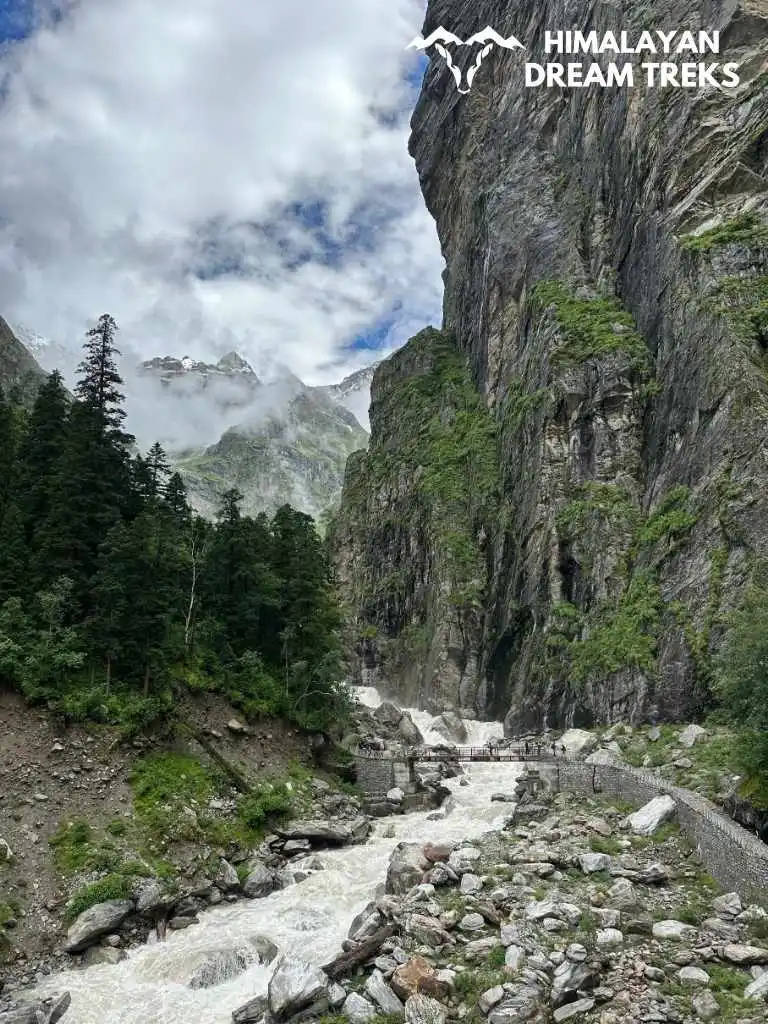
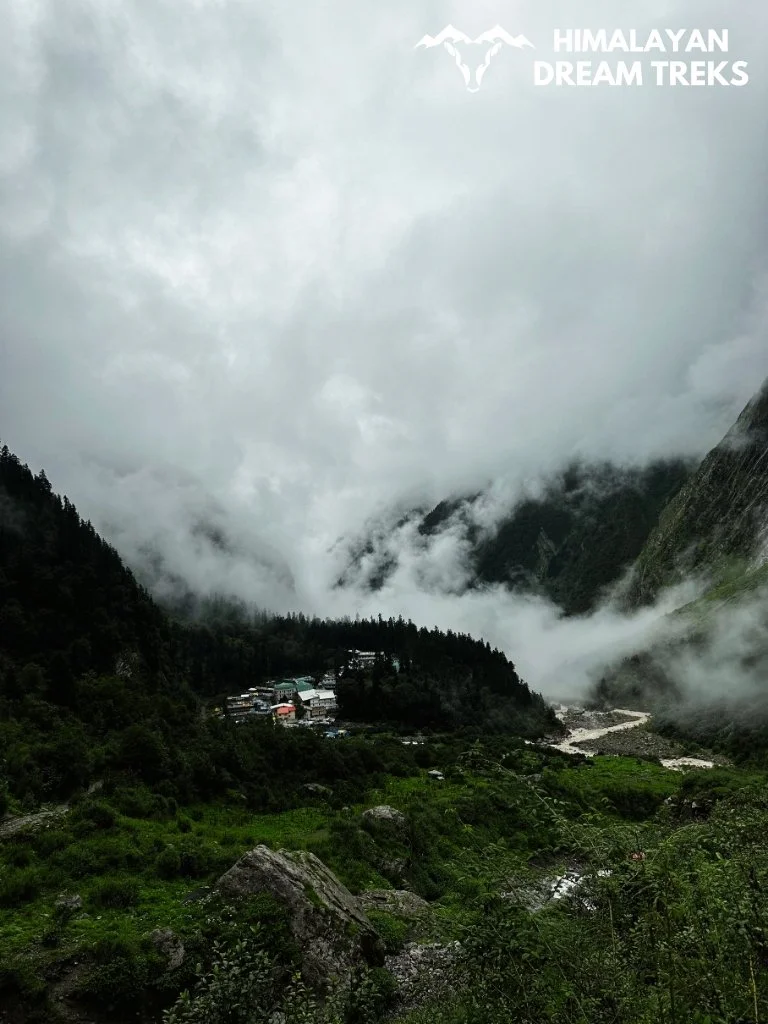
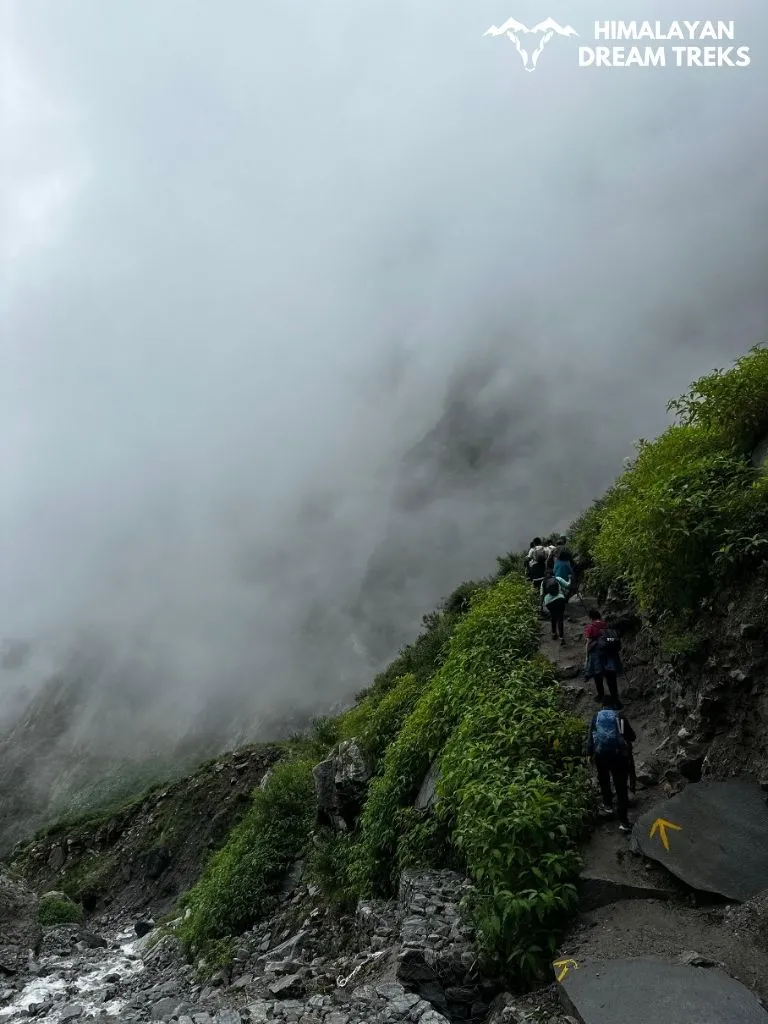
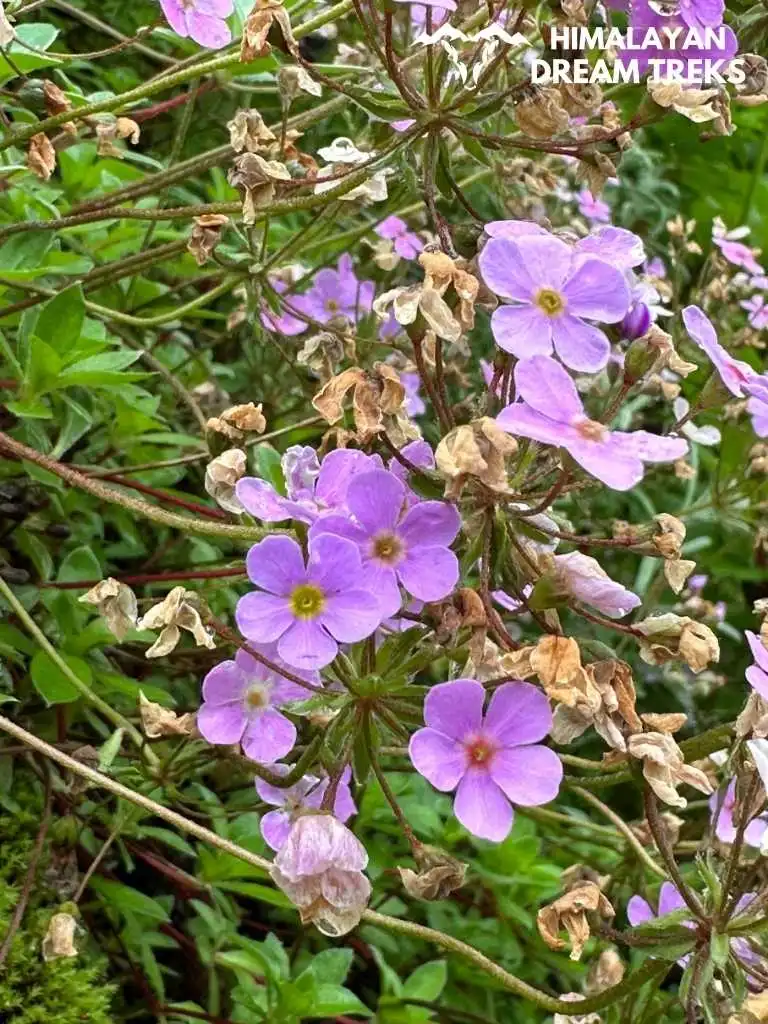
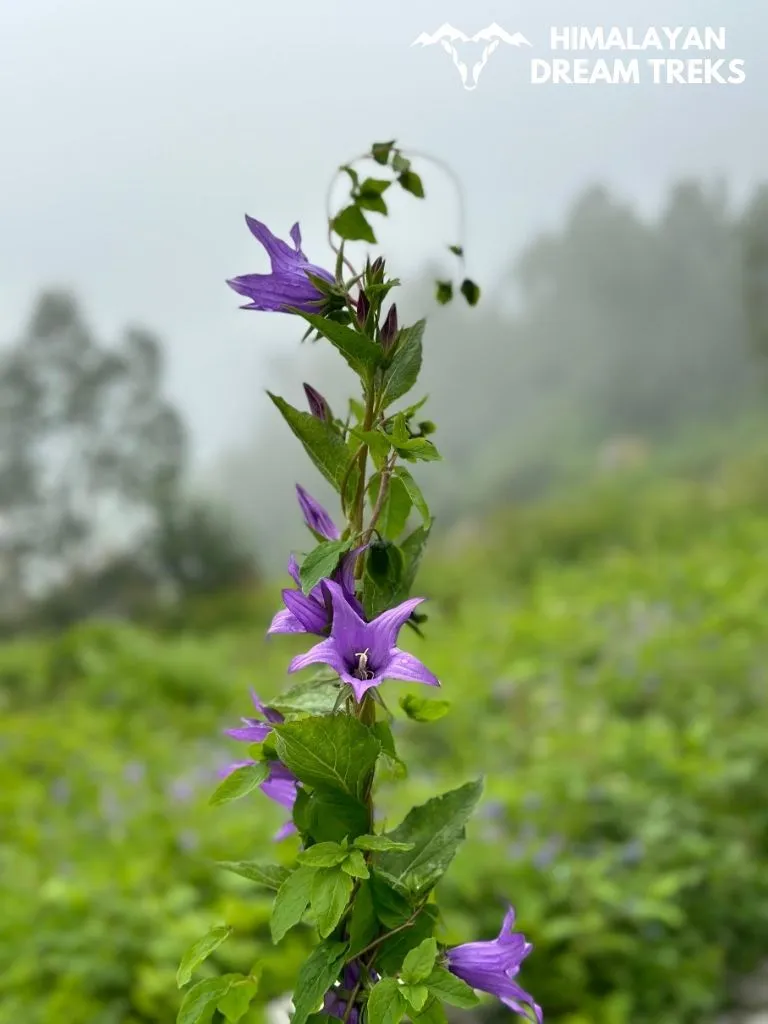
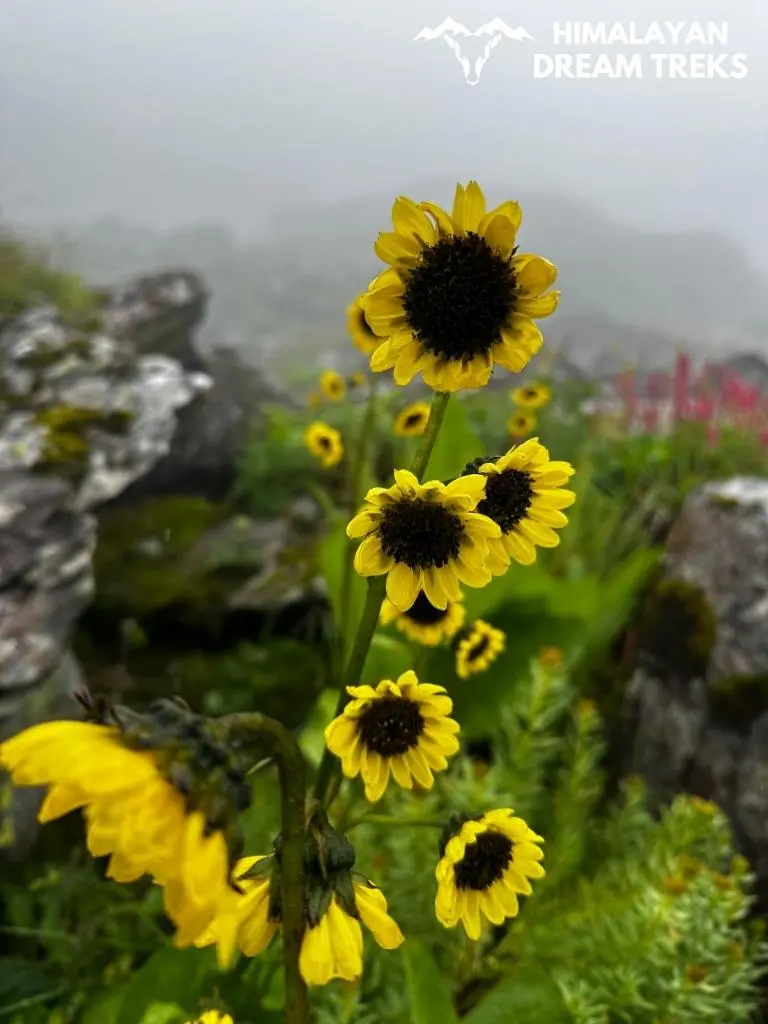
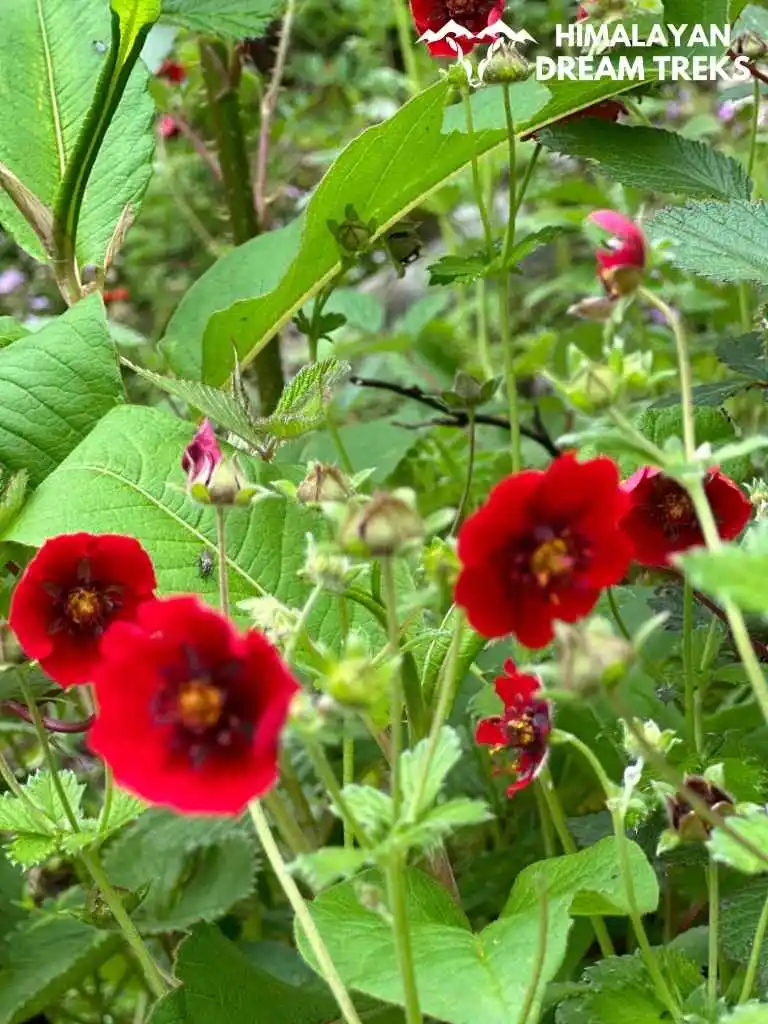
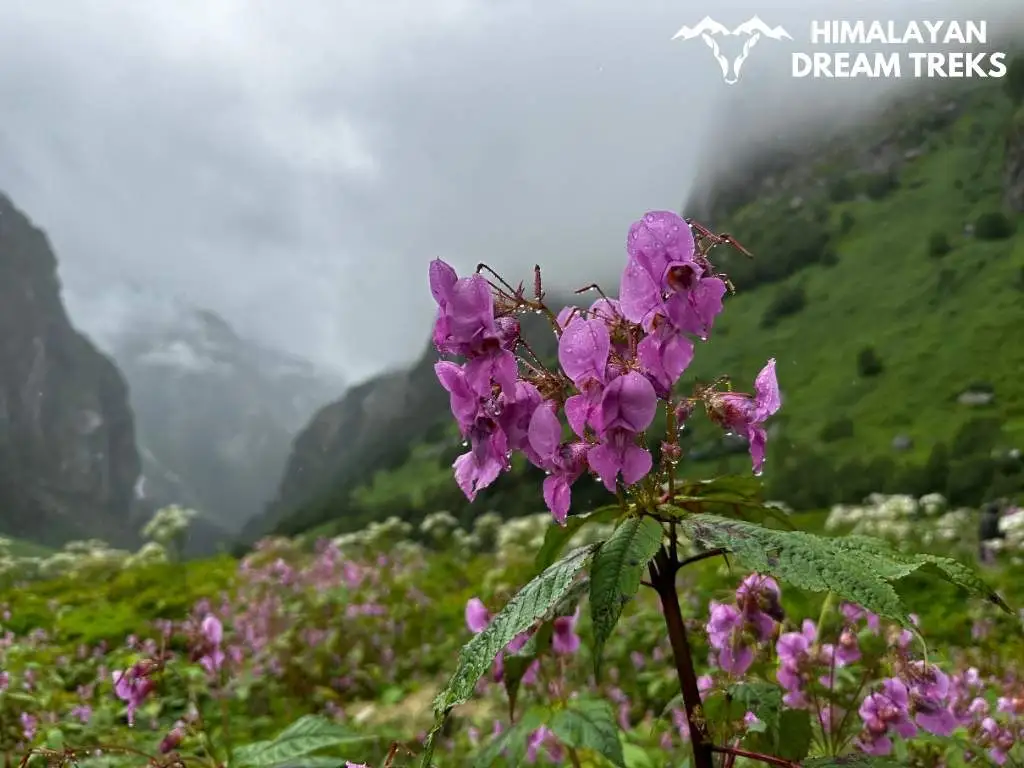

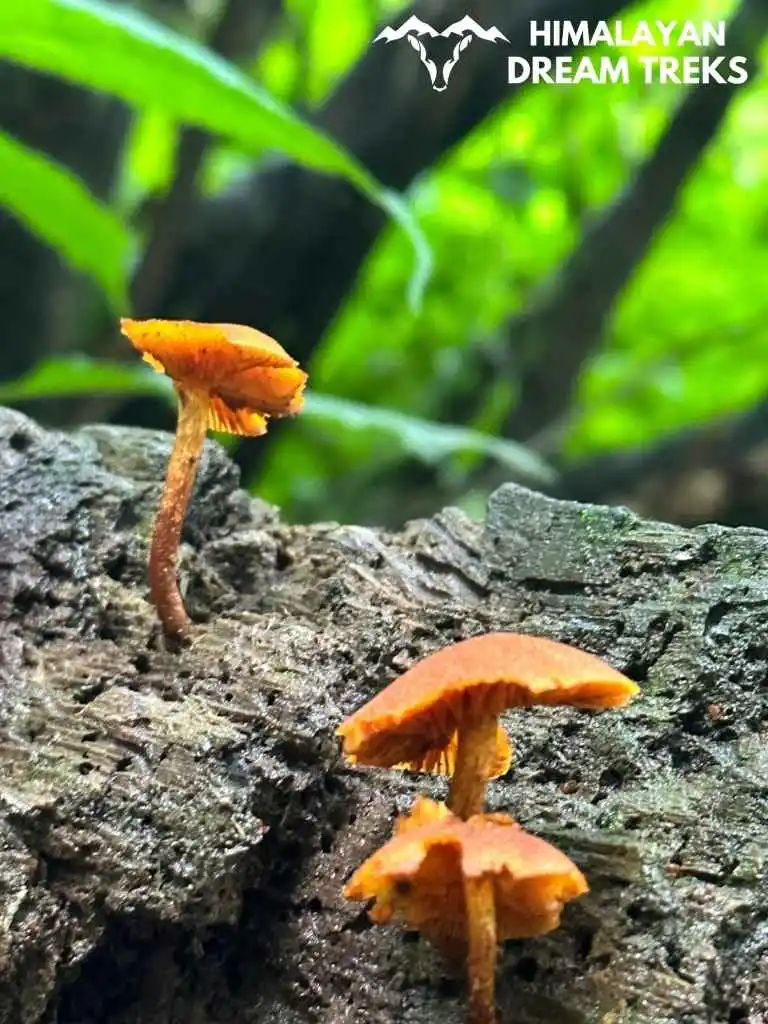
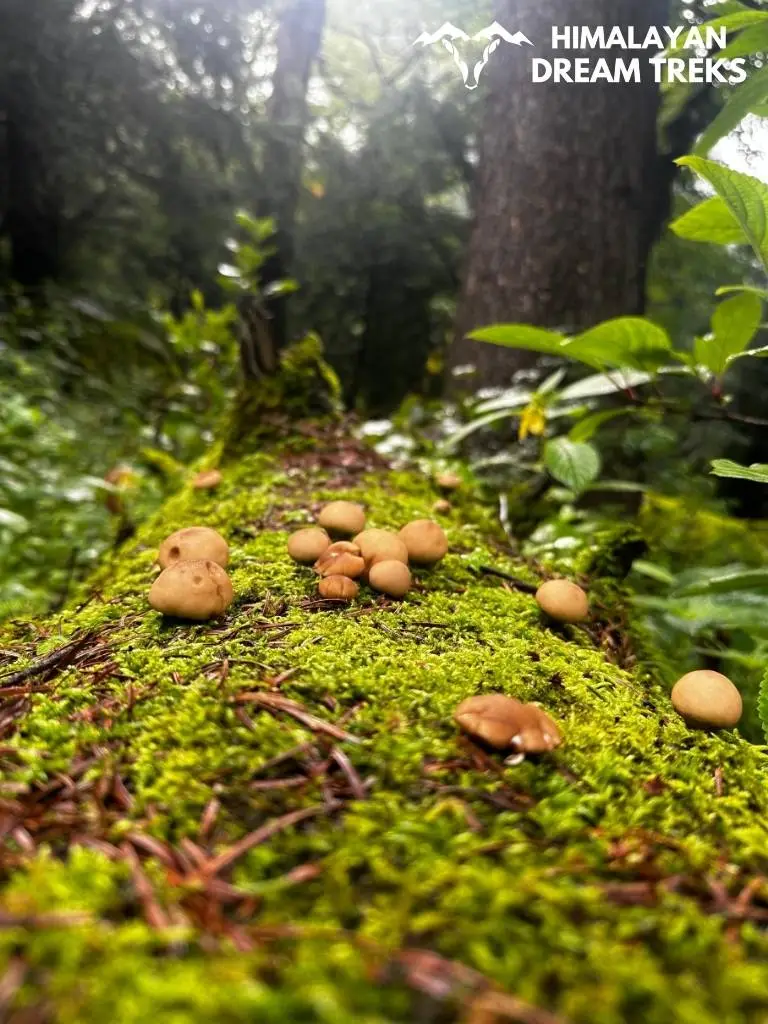
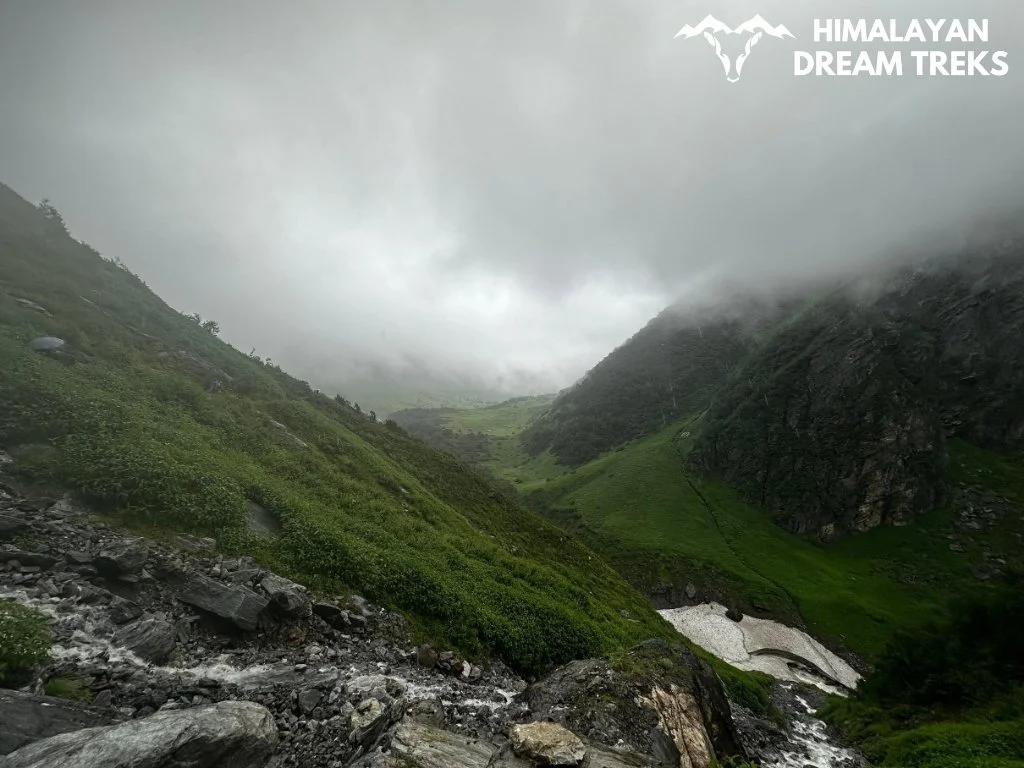
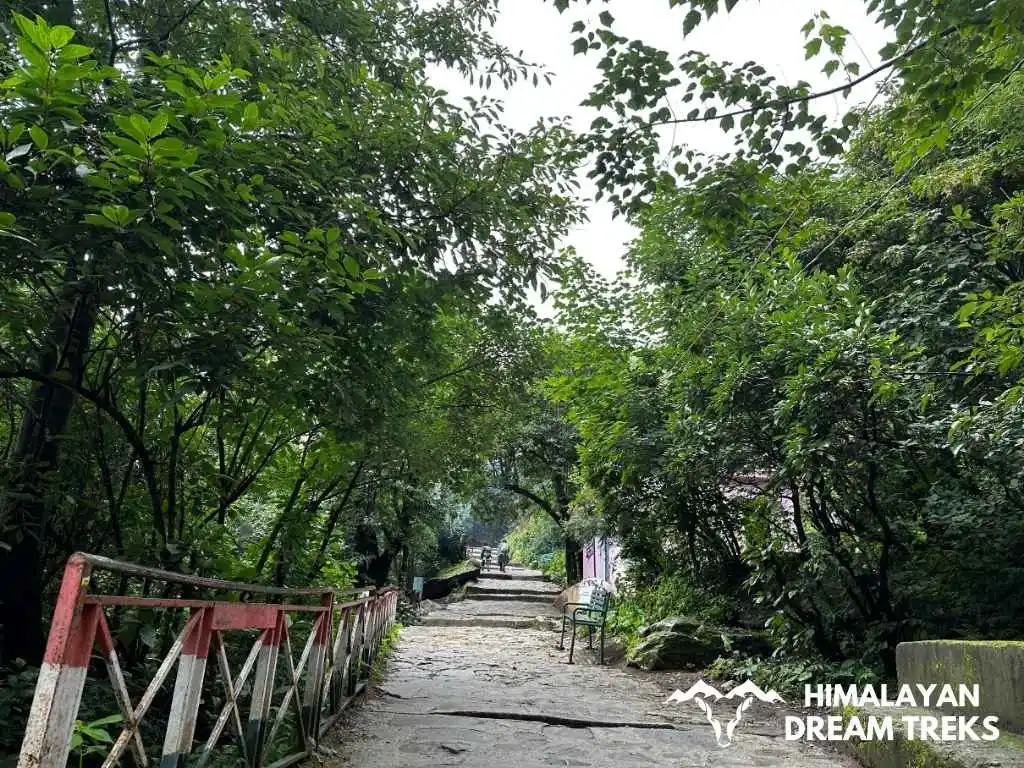
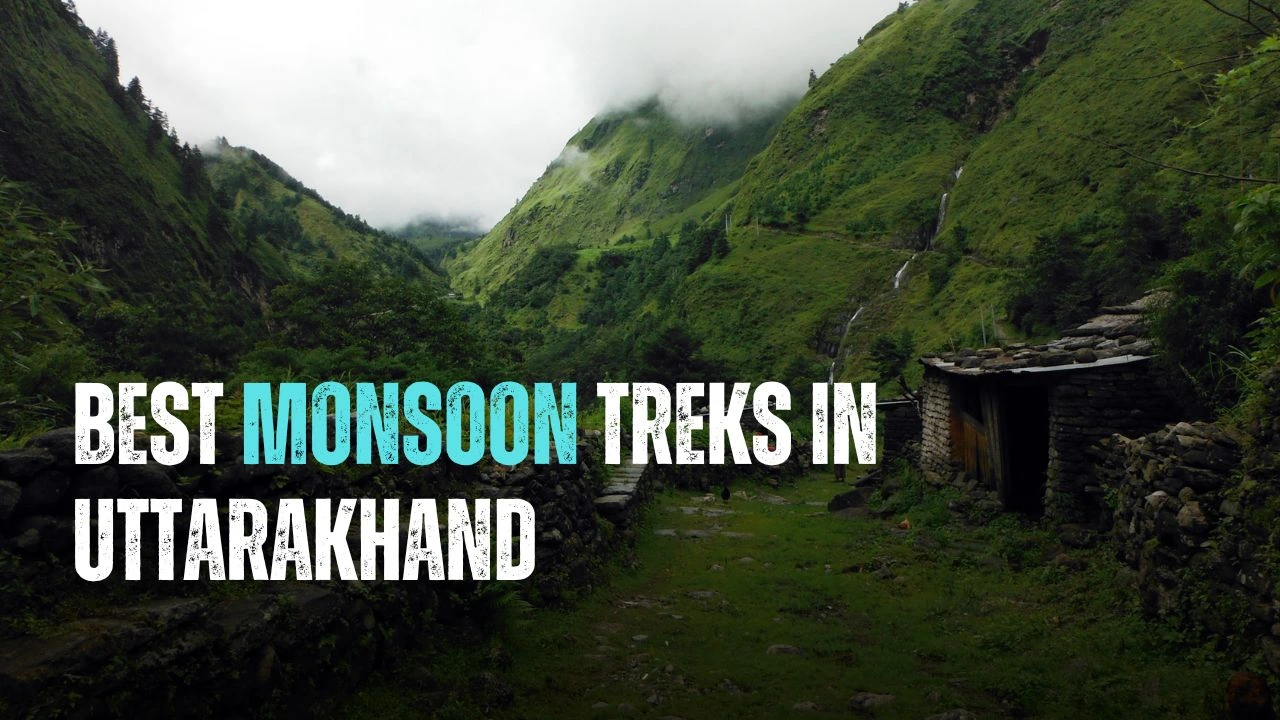

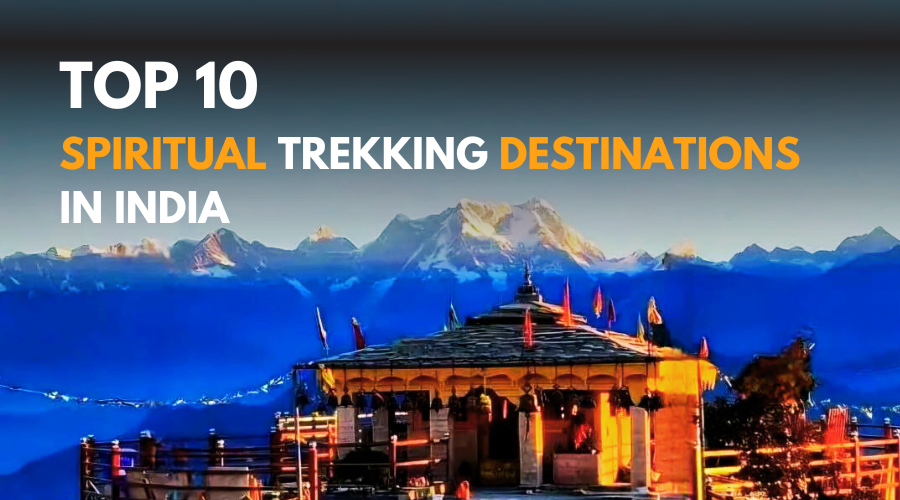

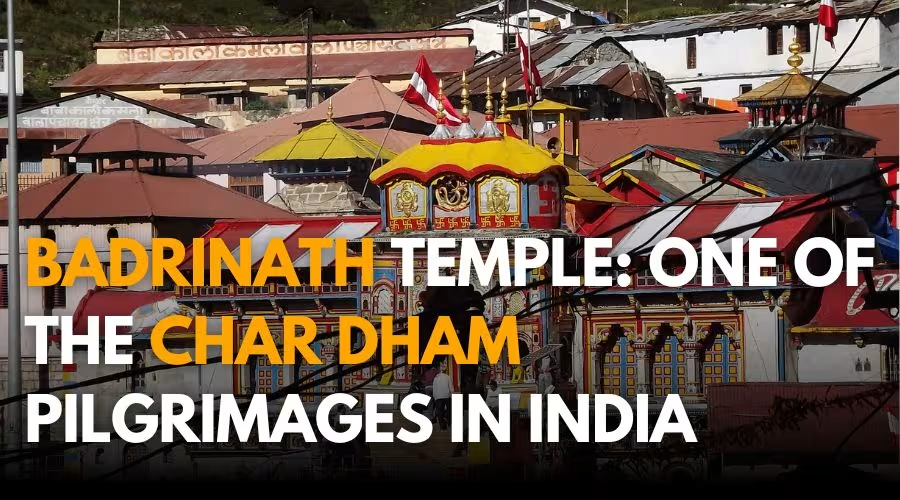
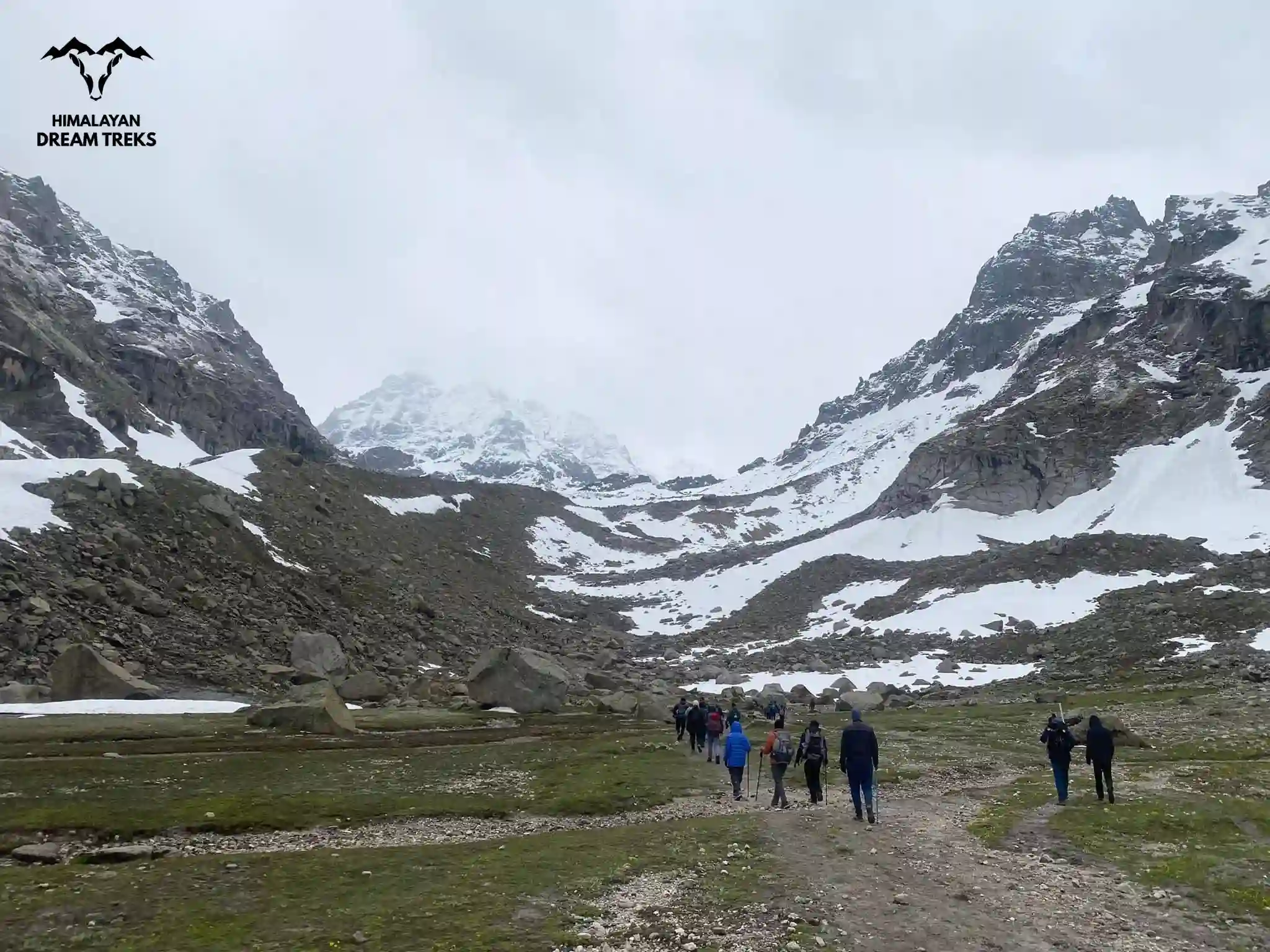
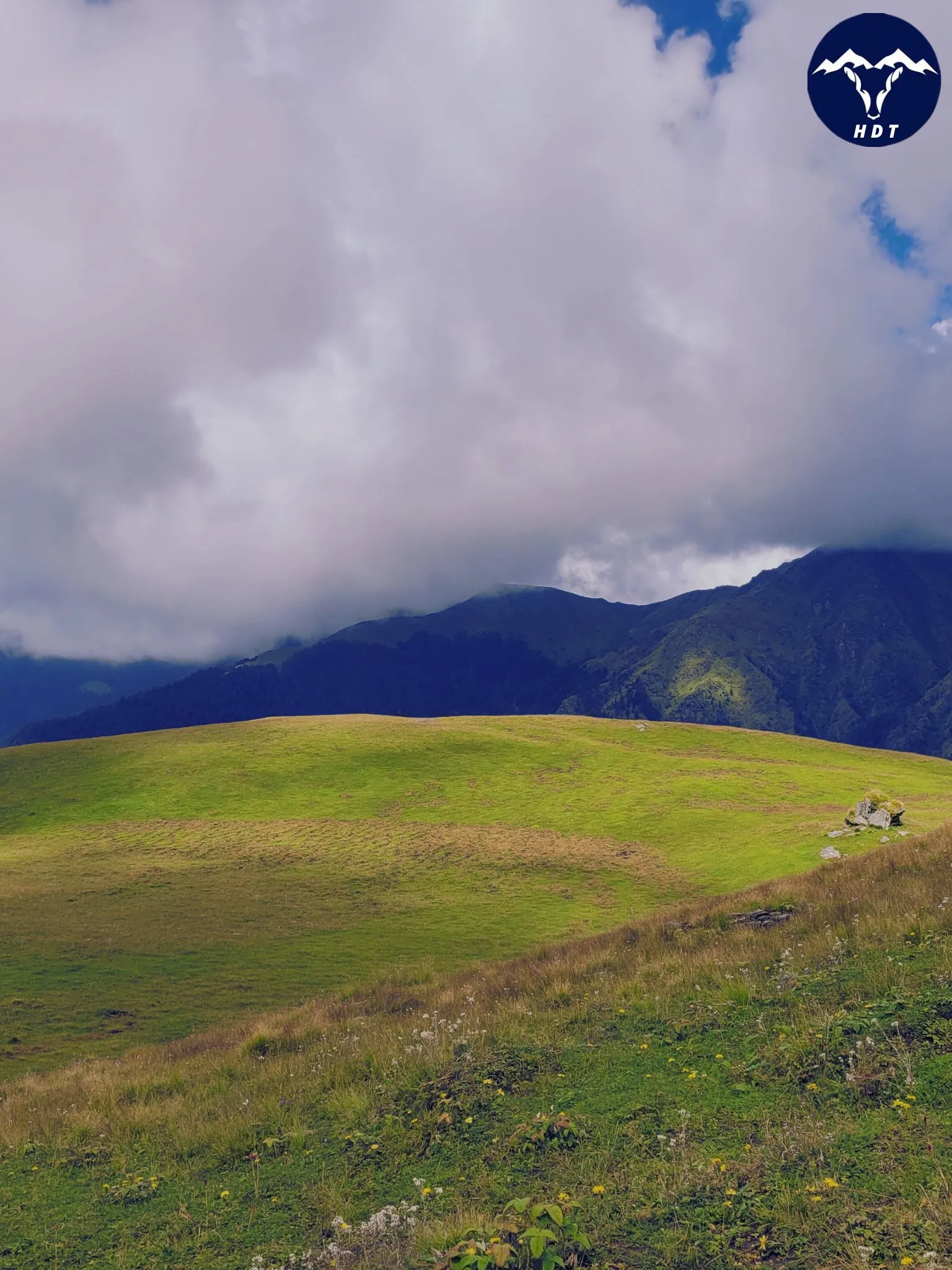
Leave a Comment